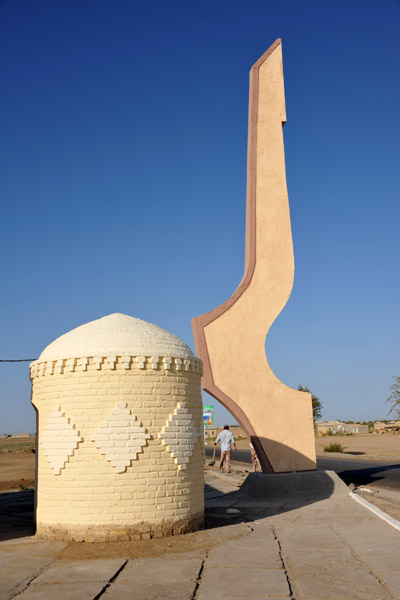
Gateway to Merv |
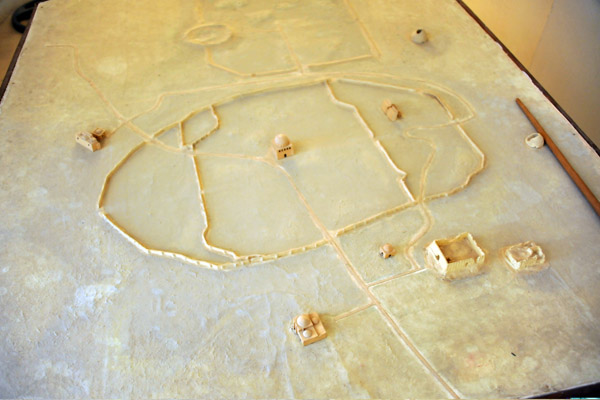
Model of the archeological site of Merv, a UNESCO World Heritage Site |
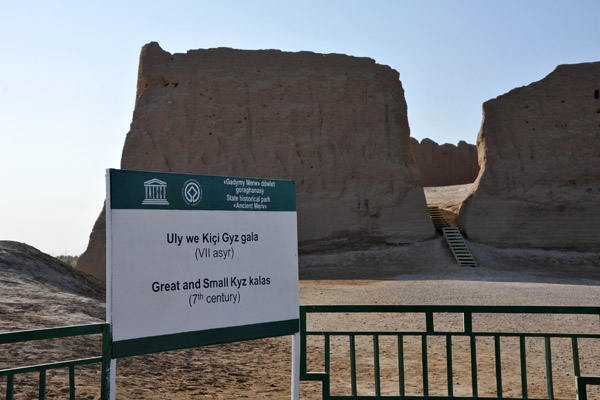
The Great and Small Kyz kalas, 7th Century |

A large hole in the western wall of the Great Gyzgala |
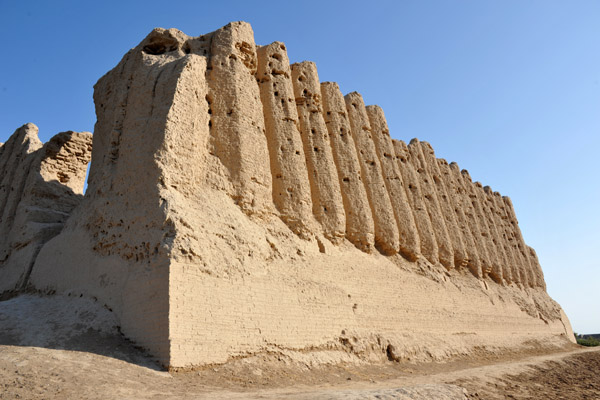
Kyz Kala (or Gyzgala) is Turkmen for "maiden's fortress" |
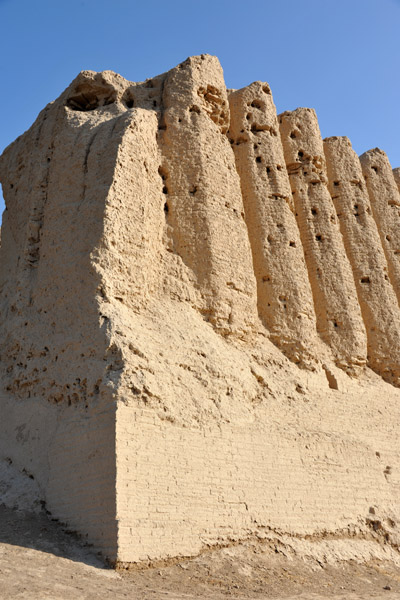
Corner of the Greater Kyz Kala of Merv |
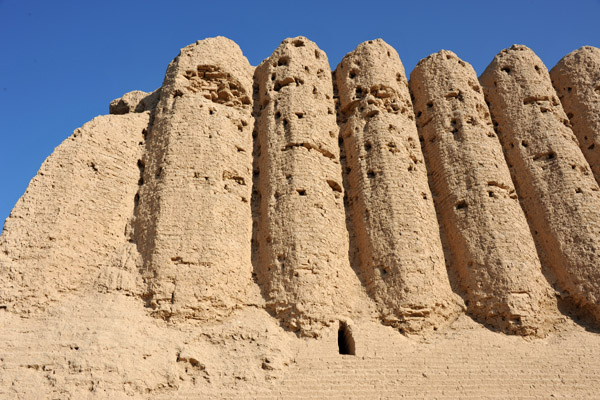
Corrugated walls of the Kyz Kalas of Merv are unique in Central Asia |
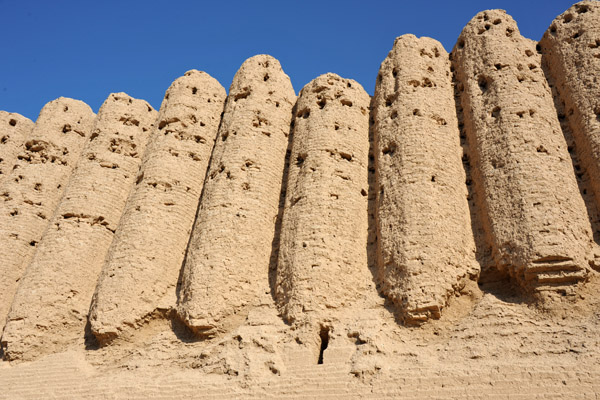
Southern wall of the Greater Kyz Kala, 7th Century |
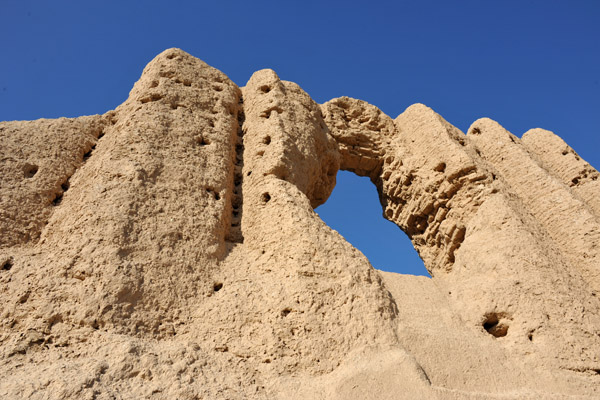
The Greater Kyz Kala was built by the Sassanians and were in use until the Mongol conquest 600 years later |
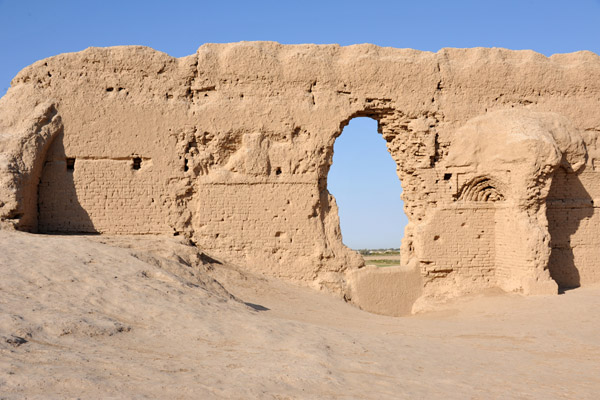
Entering the Greater Kyz Kala you are on the second level. The roof has collapsed burying the ground floor |
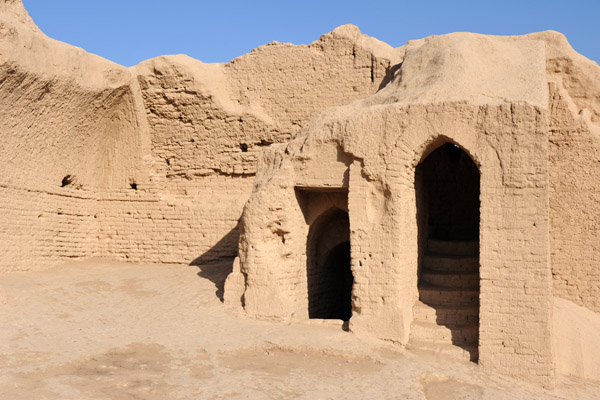
Staircase of the Greater Kyz Kala, Merv |
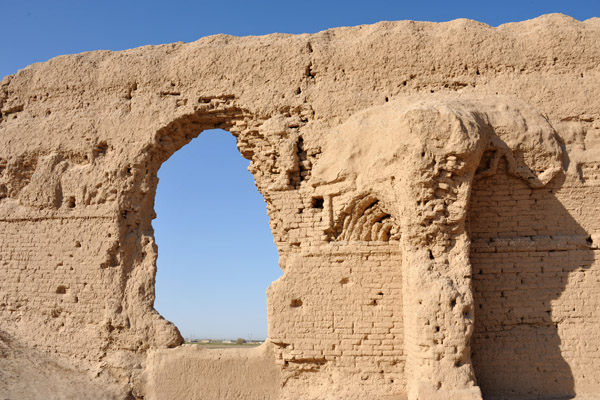
Greater Kyz Kala |
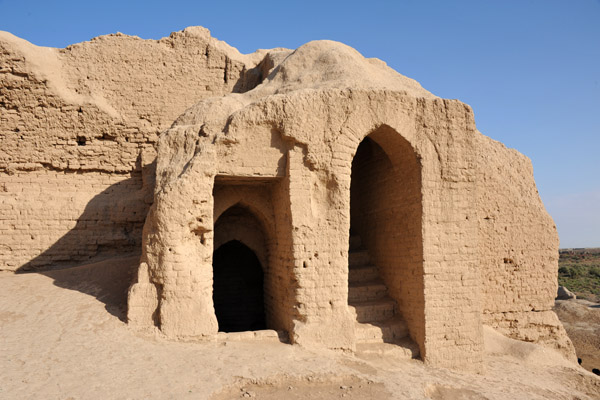
Stairways leading up to the long-gone parapet and down to the buried ground floor |
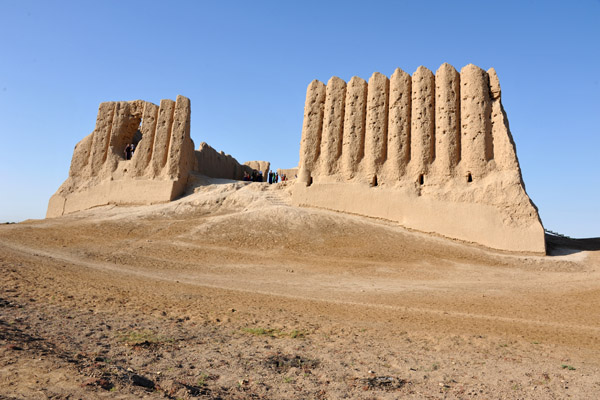
The Greater Gyzgala is the most impressive of the ancient structures of Merv |

Greater Kyz Kala, Merv |
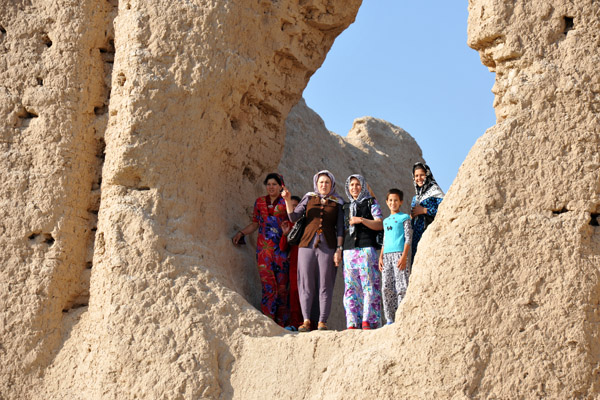
A group of Turkmen tourists visiting Merv |
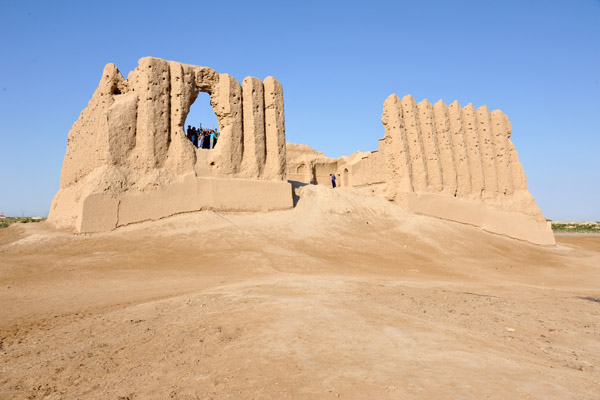
Greater Kyz Kala, 7th C. AD, Merv |
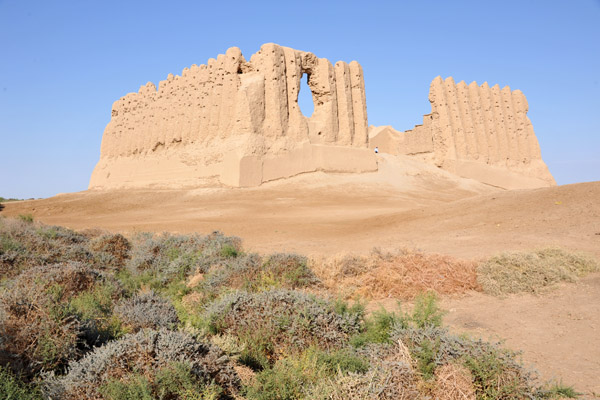
Scrubland between the Greater and Small Kyz Kala |
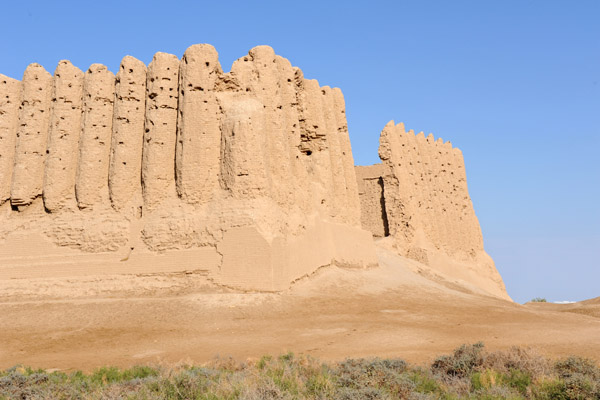
Greater Kyz Kala, 7th C. AD, Merv |
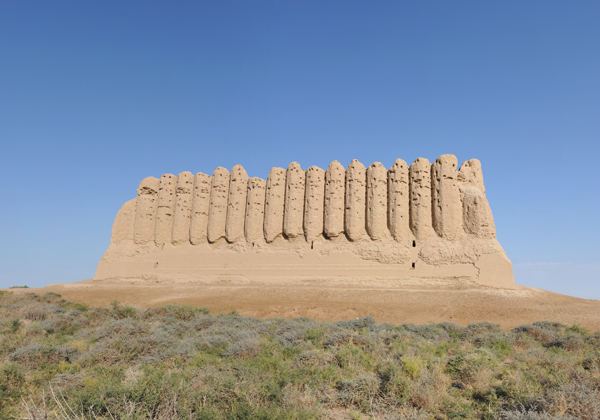
Greater Kyz Kala, 7th C. AD, Merv |
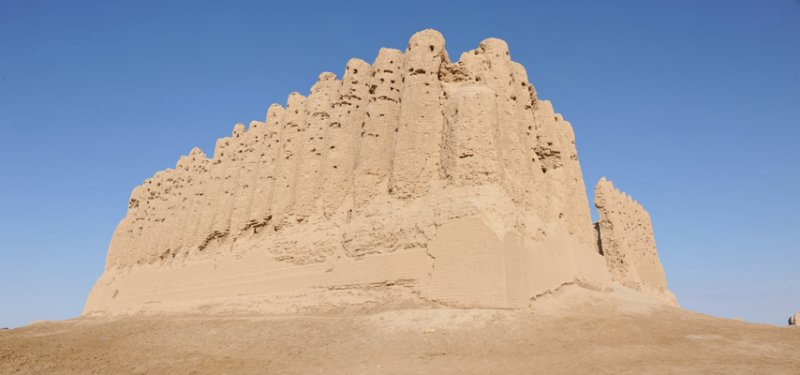
Greater Kyz Kala, 7th C. AD, Merv |
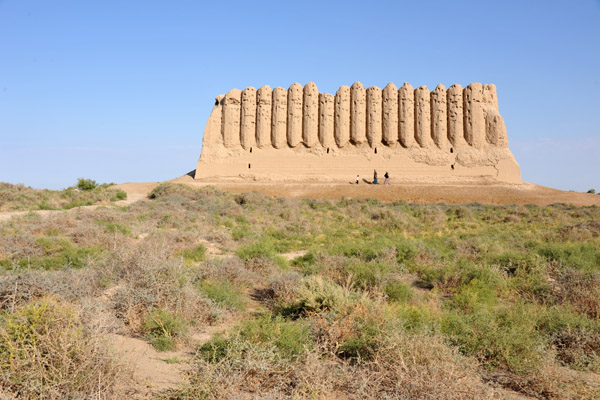
Greater Kyz Kala, 7th C. AD, Merv |
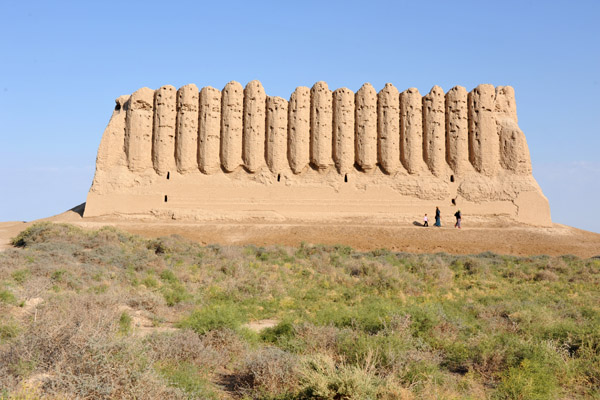
Greater Kyz Kala, 7th C. AD, Merv |
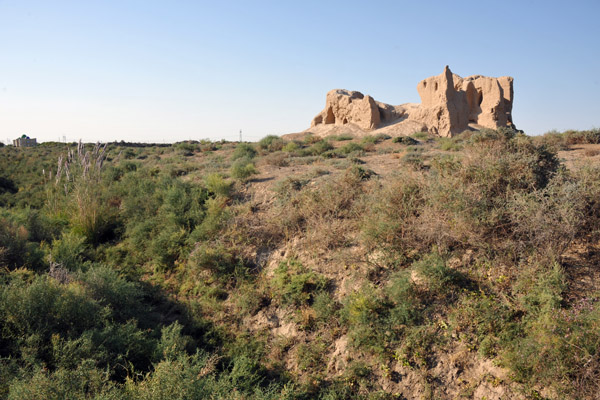
The Small Kyz Kala, also from the 7th Century |
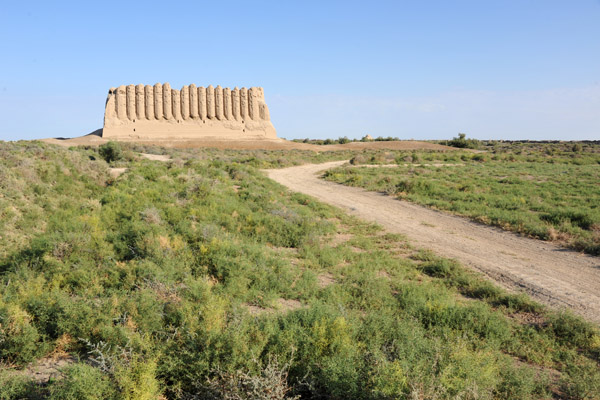
Greater Kyz Kala, 7th C. AD, Merv |
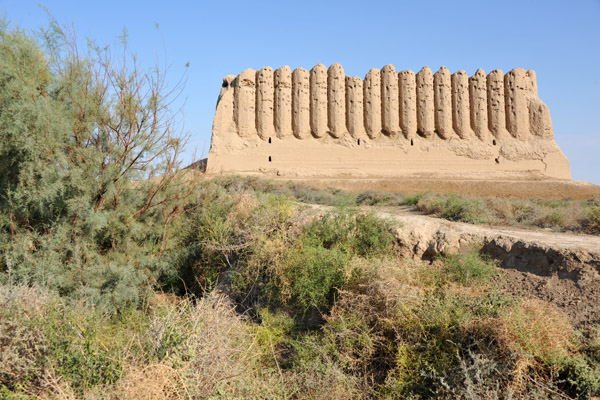
An ancient canal separated the Greater Kyz Kala and Small Kyz Kala |
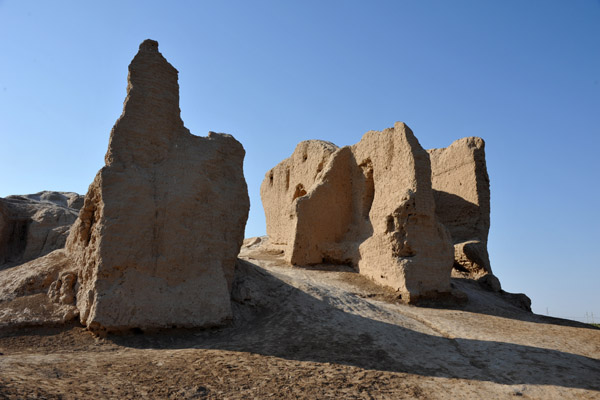
Ruins of the Small Kyz Kala, Merv |
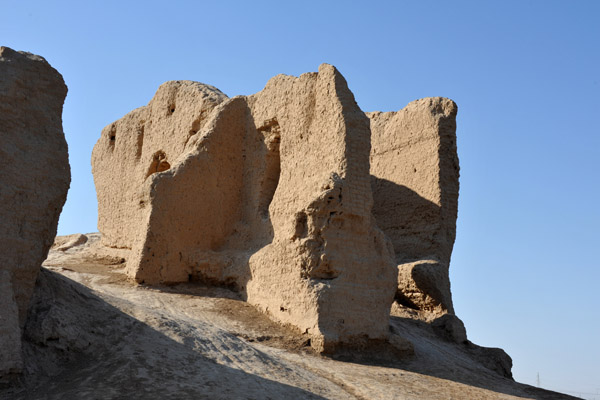
Small Kyz Kala, 7th C. AD, Merv |
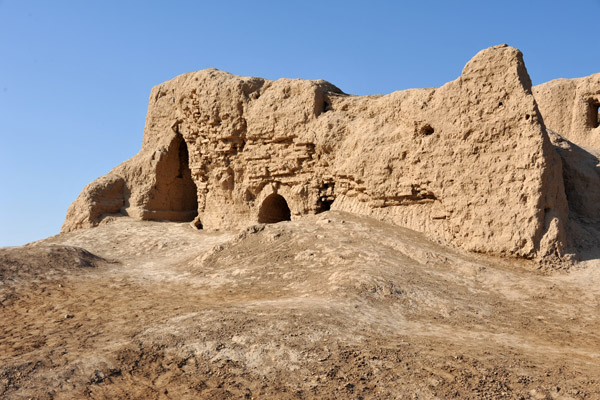
Again, the roof has collapsed burying the structure in debris |
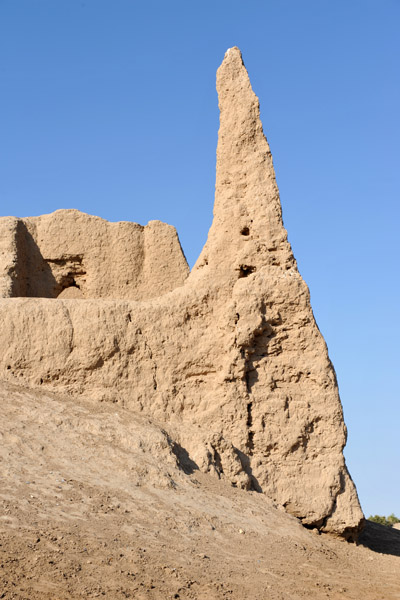
Eroded corner of the Small Gyzgala |
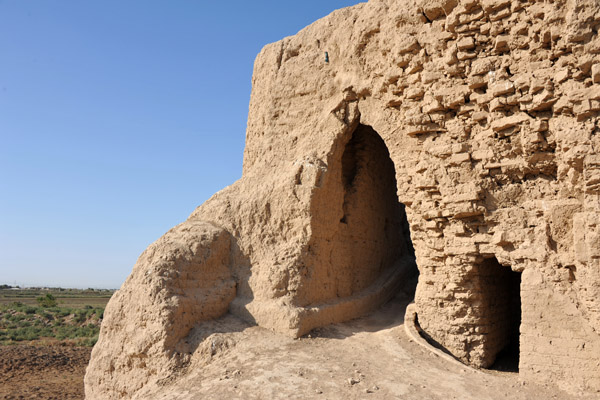
Small Kyz Kala, Merv |
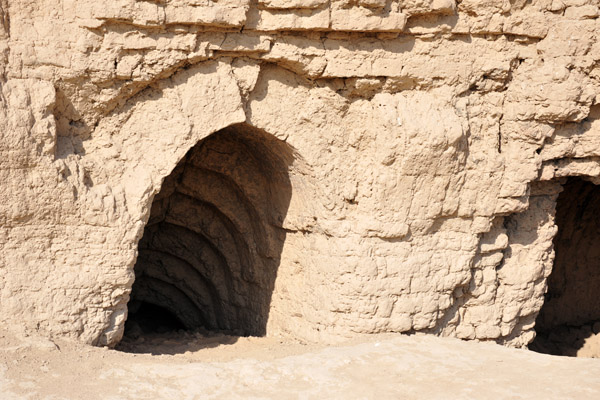
Buried staircase that once led to the ground floor of the Small Kyz Kala |
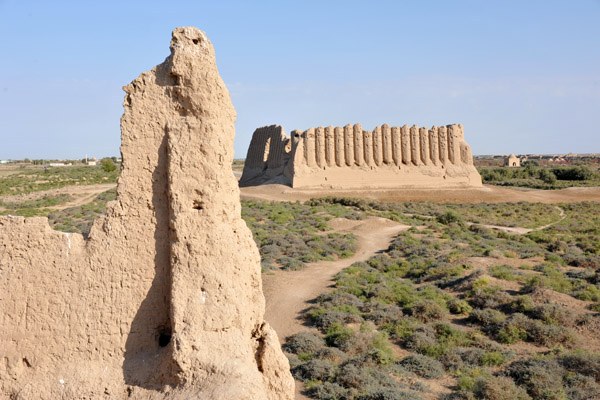
The Greater Kyz Kala from the Small Kyz Kala |
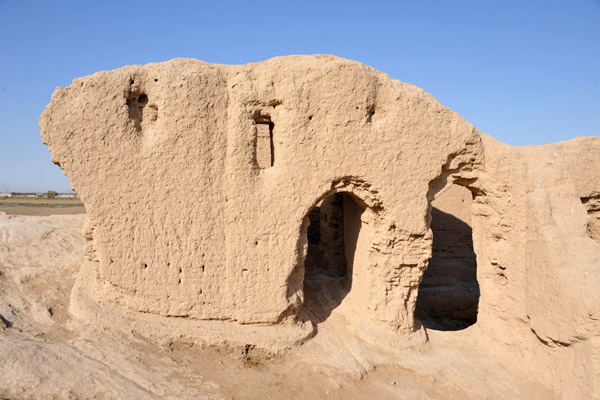
Small Kyz Kala, Merv |
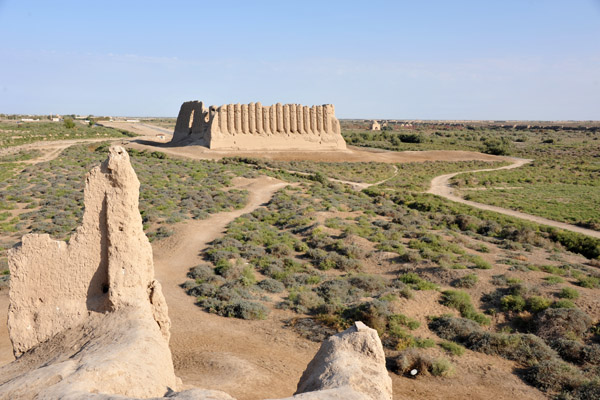
The Greater Kyz Kala from the Small Kyz Kala |
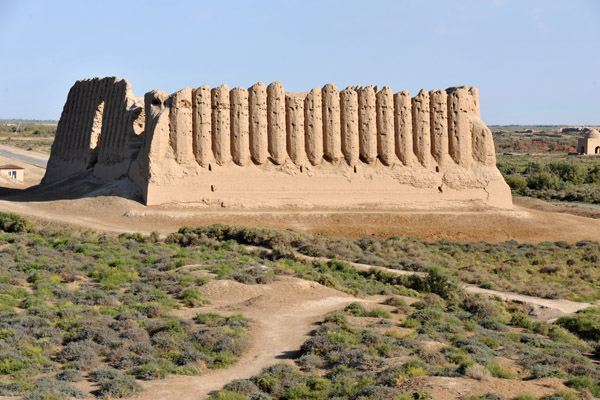
Greater Kyz Kala, Merv |
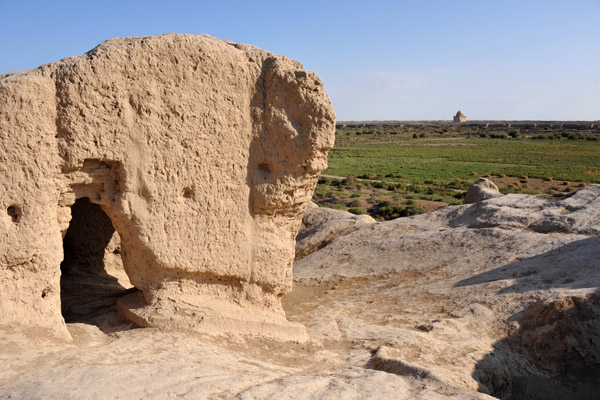
Small Kyz Kala, Merv |
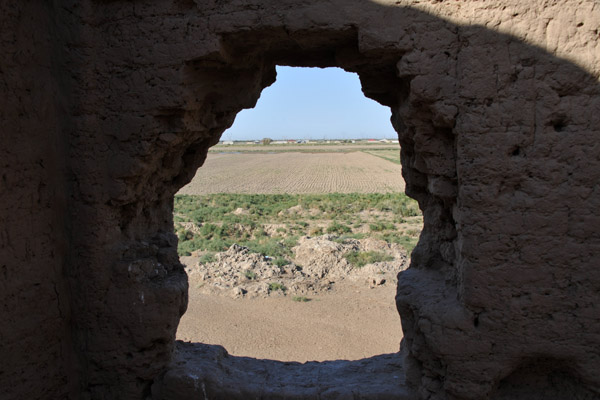
Small Kyz Kala, Merv |

Small Kyz Kala looking to the Greater Kyz Kala |
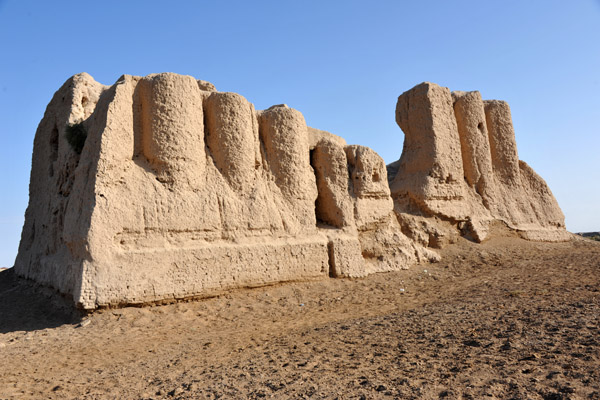
The south side of the Small Kyz Kala still displays the corrugated building style unique to Merv |
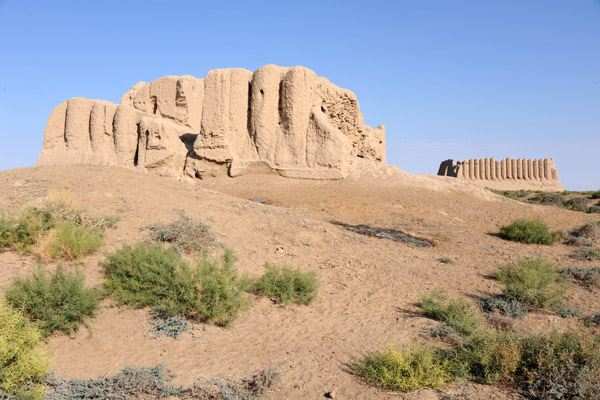
The Small Kyz Kala, Merv |
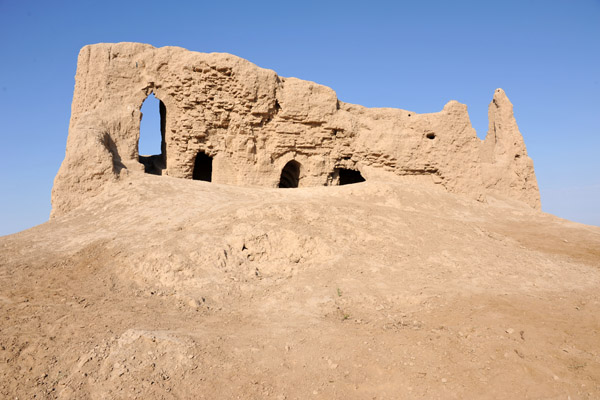
Small Kyz Kala, Merv |
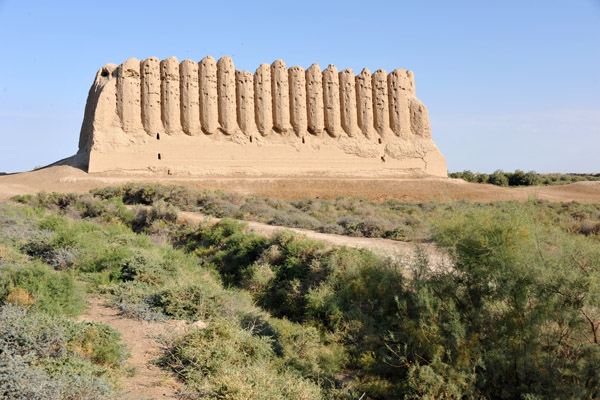
The ancient canal in front of the Greater Gyz Gala |
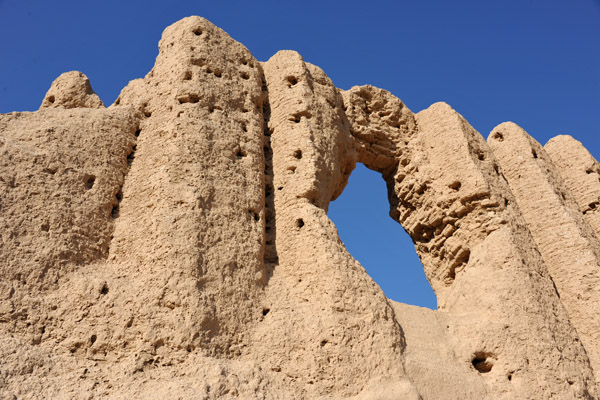
The Greater Kyz Kala with a deep blue sky |
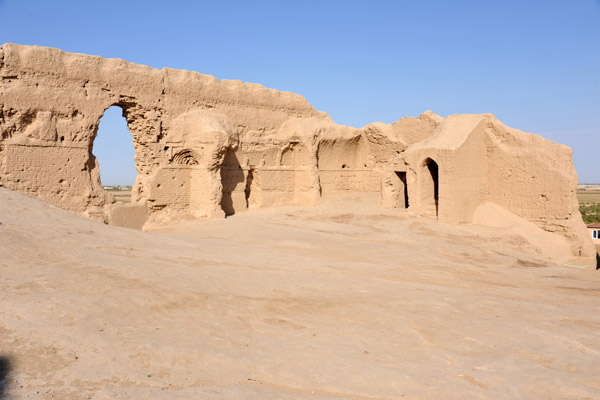
Inside the Greater Kyz Kala |
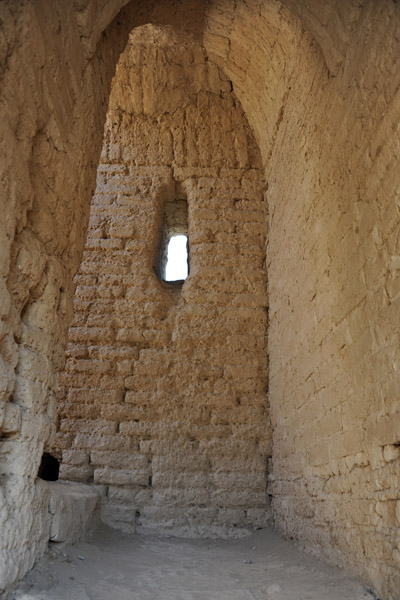
Passageway leading to the stairs going up |
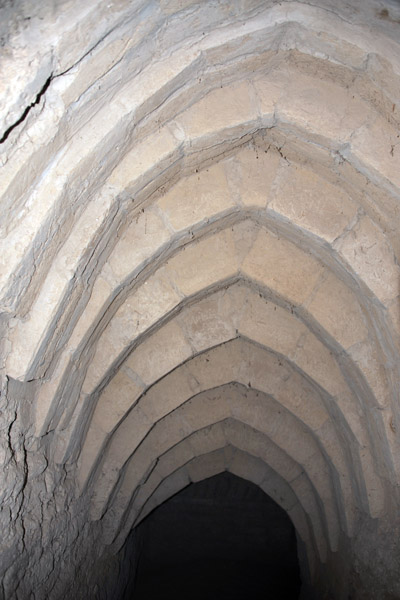
The stairs to the ground floor buried in debris |
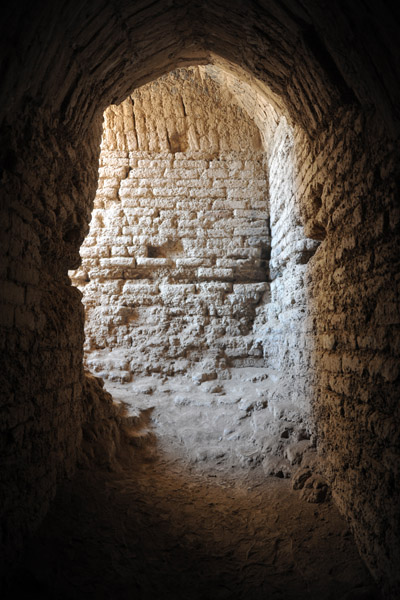
The worn out remains of the Greater Kyz Kala's staircase |
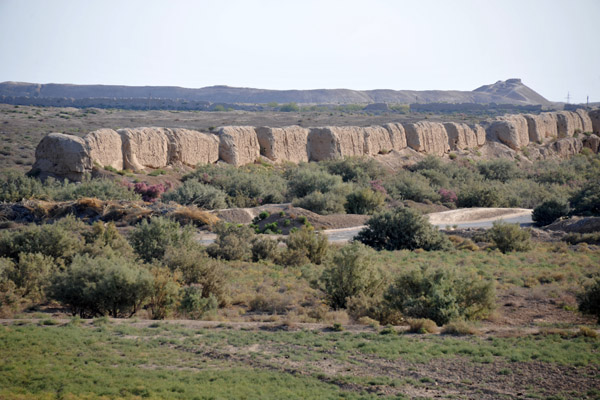
The walls of Soltangala, or Sultan's Fortress, the largest of Merv's 5 ancient walled cities |
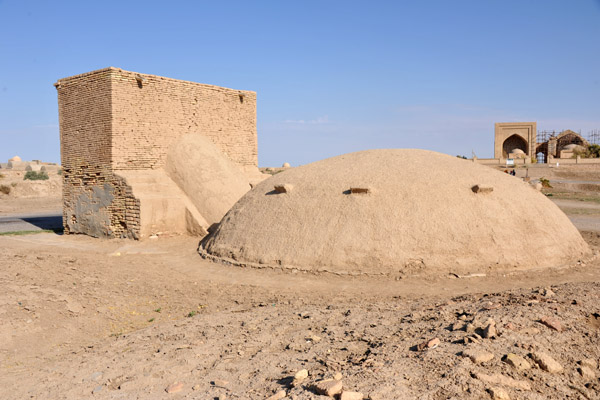
Post-Mongol Timurid-era Ice House in the Abdullah Khan Kala, Merv's 4th walled city |
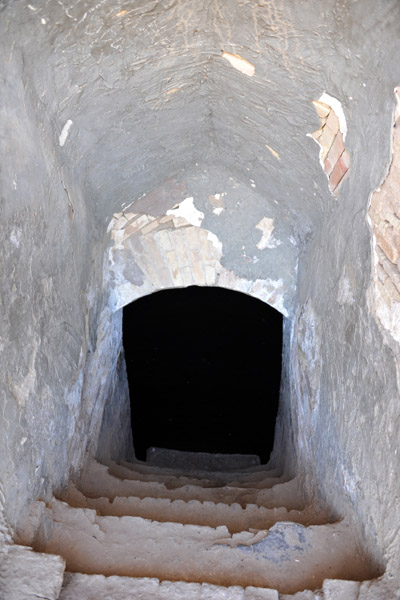
Stair leading town into the Ice House |
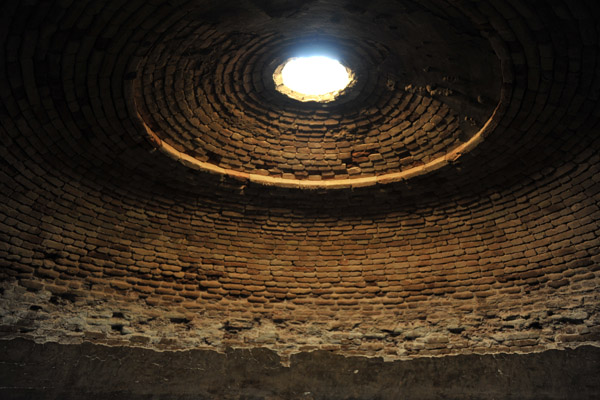
Inside one of the Ice Houses built during Merv's Timurid era |
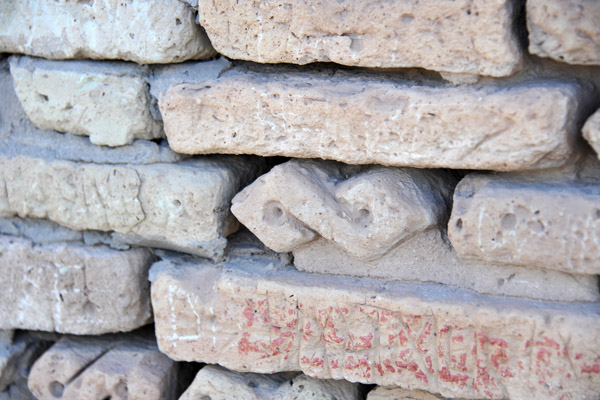
An interesting brick of the Timurid Ice House, Merv |
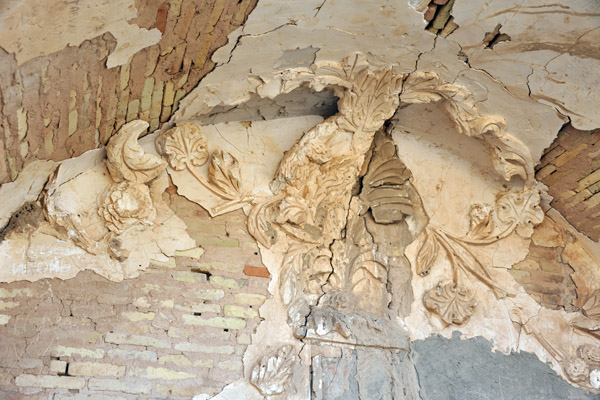
Remains of stucco ornamentation |
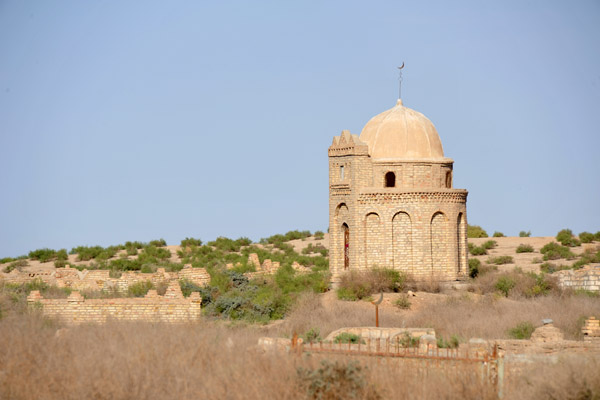
Merv's 4th walled city, the Abdullah Khan Kala, was founded by Shahrukh (1405-1447) |
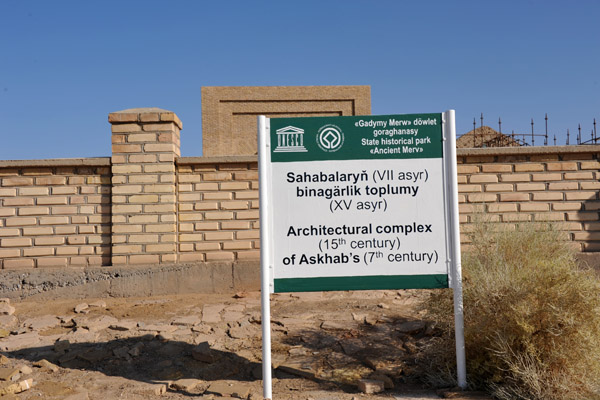
Architectural complex (15th century) of Askhab's (7th century) |
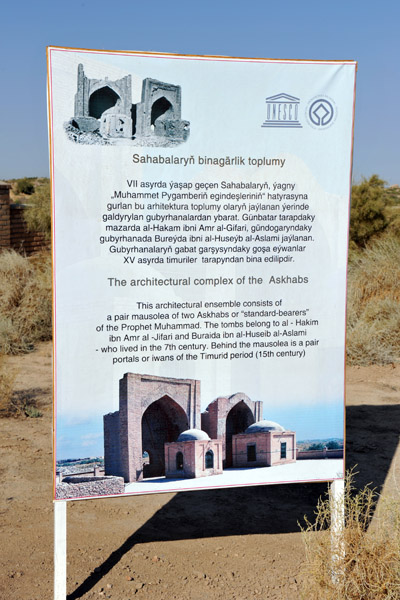
Architectural complex of the Askhabs |
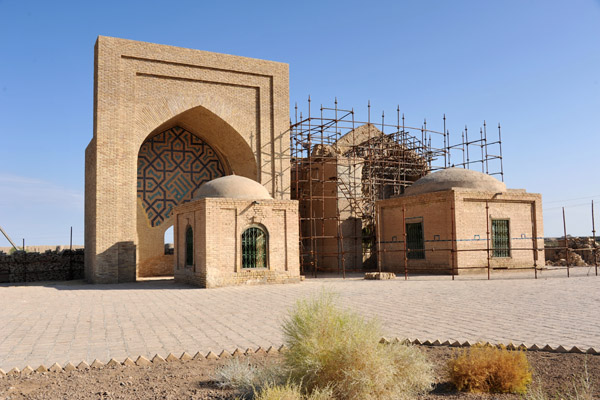
The large portals (iwans) date from the Tumurid Period (15th C) while the mausoleums are from the 7th C. |
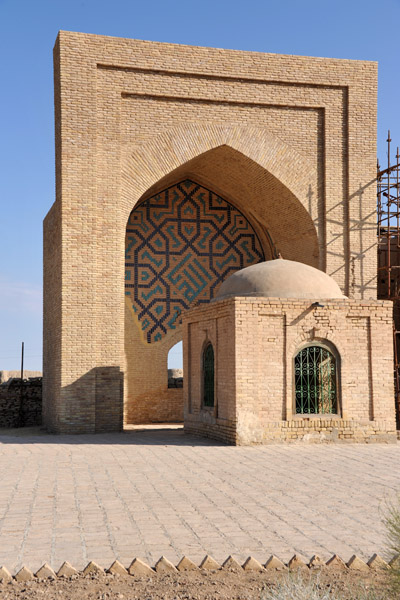
The tombs belong to Al Hakim ibn Amr Al-Jifari and Buraida ibn al-Huseib al-Aslami |
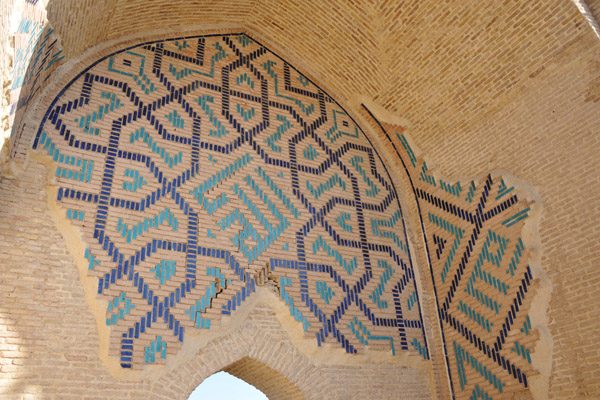
Remains of 15th Century Timurid tile work, Merv |
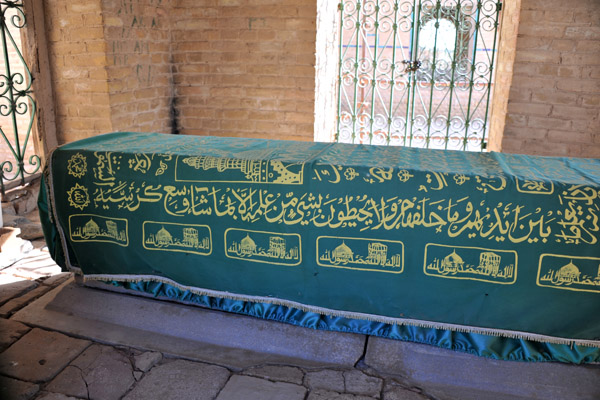
The 7th Century tombs are still places of pilgrimage for the Turkmen people today |

Panorama of the massive Seljuk city walls of Soltankala |

The walls didn't stop the Mongols who destroyed Merv in 1221 |
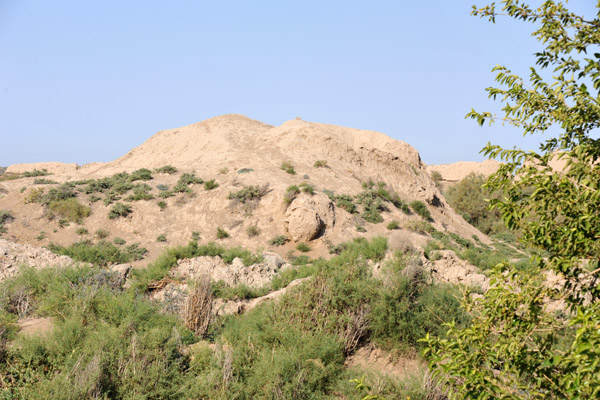
Each pile of dirt is an unexcavated ruin |
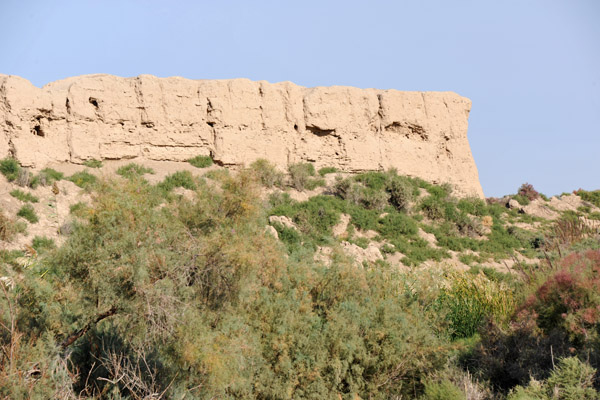
Southeast corner of the Soltankala, Merv |
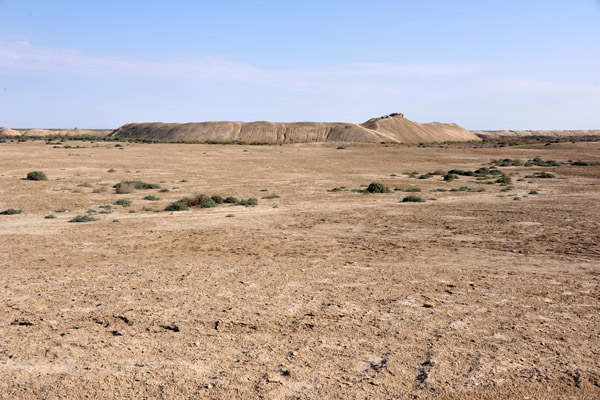
The oldest of Merv's 4 ancient walled cities - the Erk Kala seen from within the 2nd city, the Giaur Kala (Gäwürgala) |
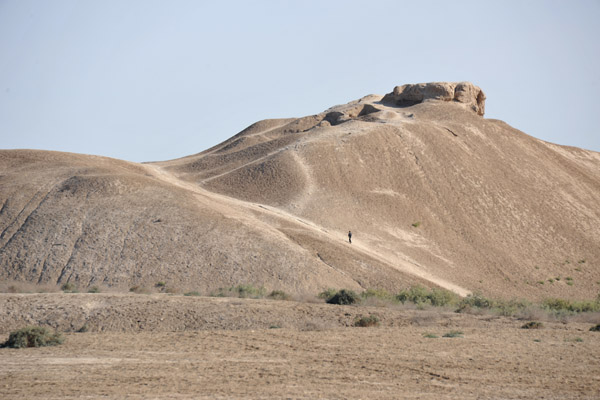
The Erk Kala was founded by the Achaemenids in the 6th C. BC |
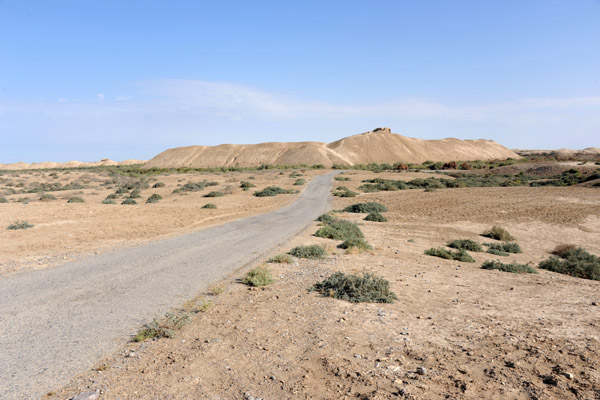
Alexander the Great renamed it after himself, Alexandria Margiana |
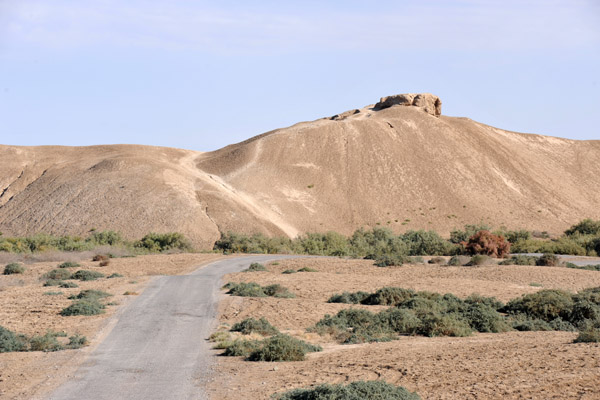
The massive walls of the Erk Kala were over 25m tall |
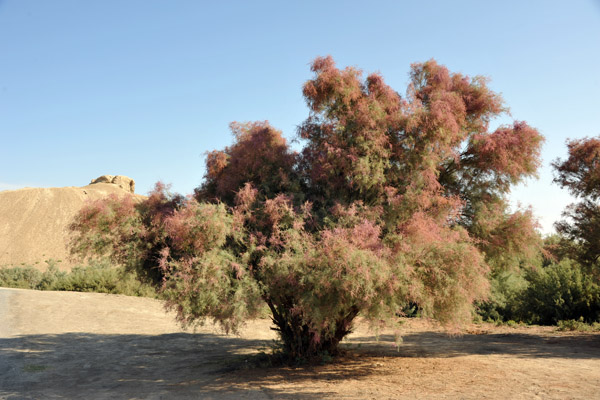
An interesting bush at Merv which changes color with the seasons |
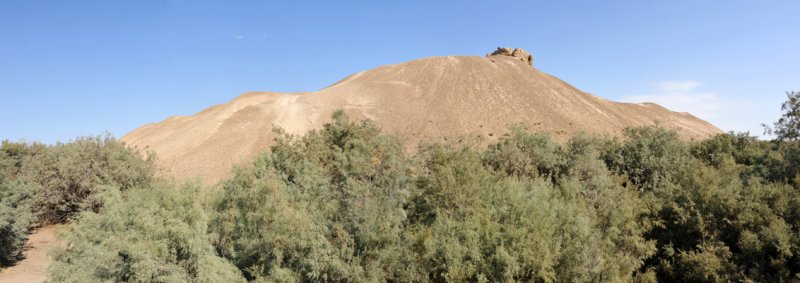
Erk Kala, the Citadel, 6th C. BC |
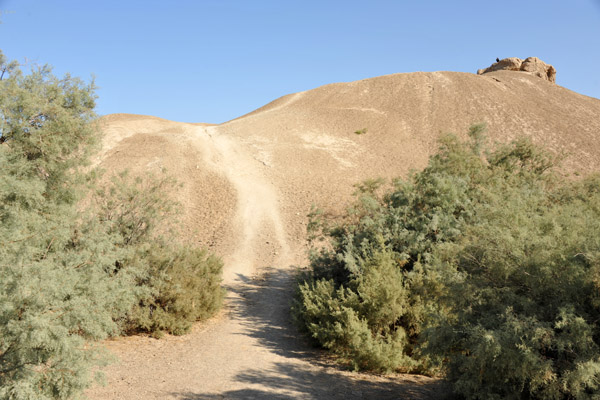
Path leading up the worn out walls of the Erk Kala |
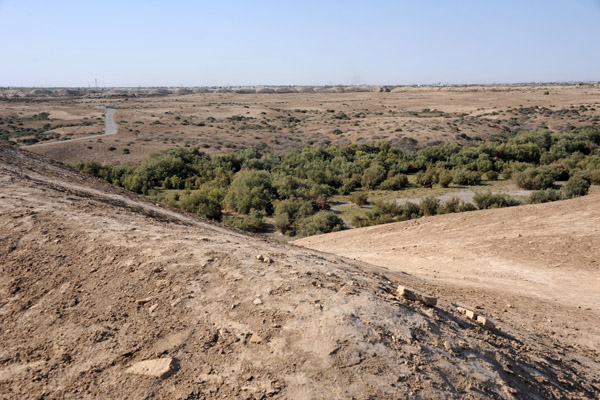
The Sassanians built their larger ancient city, the Giaur Kala, to the south of the Erk Kala in the 3rd C. BC - little remains |

Panoramic view of the Erk Kala from the southern wall |
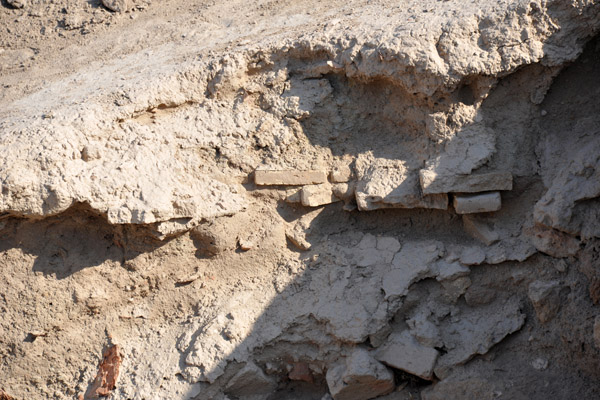
If you look close, you can make out some ancient bricks that have not yet melted away to mud |
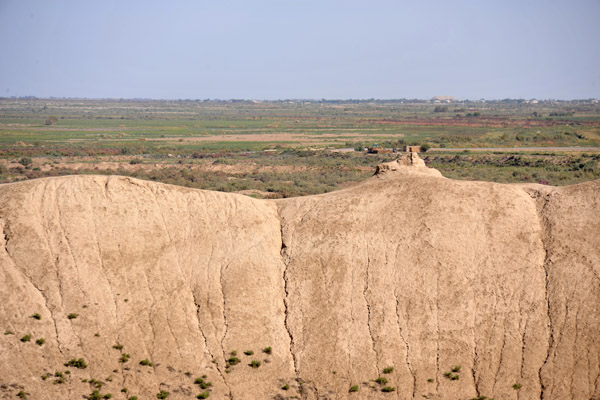
The Citadel Erk Kala was in use through the early Islamic period |
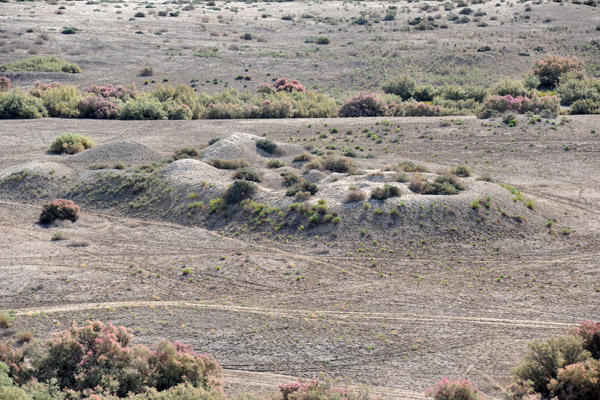
Ruins of a large building in the Giaur Kala |
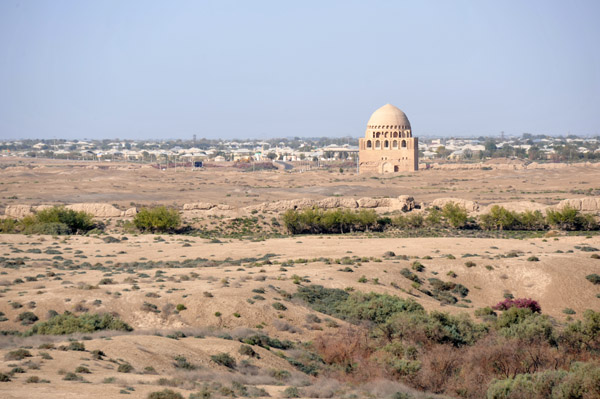
The Mausoleum of Sultan Sanjar in the center of the Soltankala to the west of the Erk Kala and Giaur Kala |

The large mound in the center of the Erk Kala - the remains of the ancient palace |
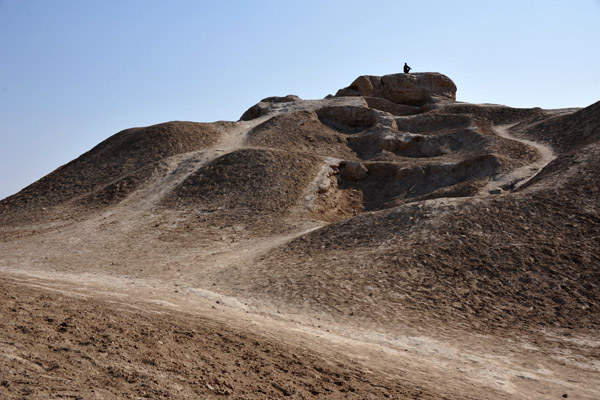
Remains of one of the large towers of the Erk Kala |
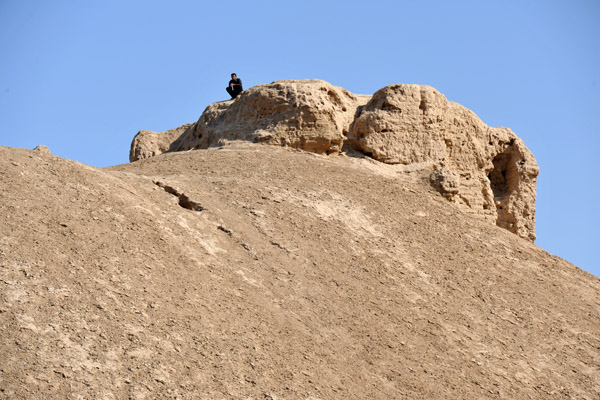
Tower of the Erk Kala |
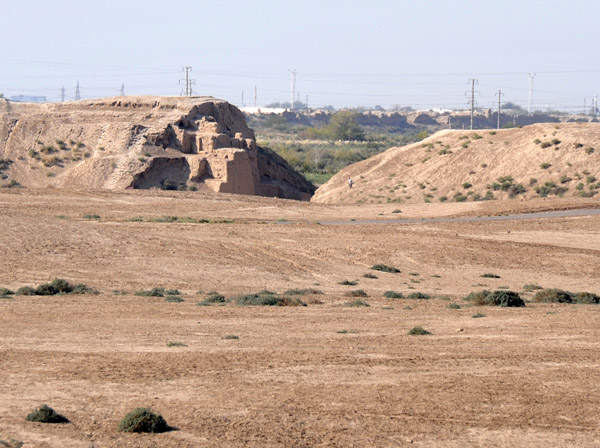
Excavations of the gate to the second ancient city, the Hellenistic Giaur Kala |
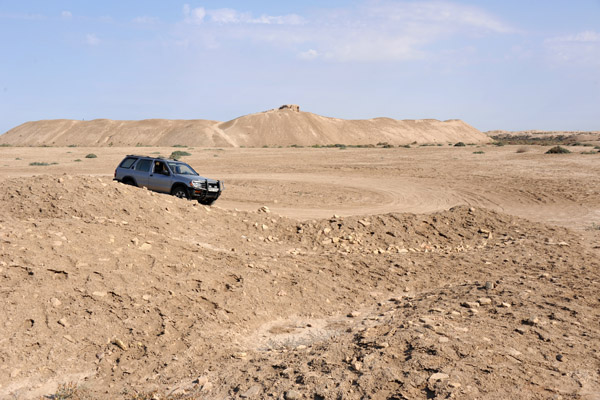
It's difficult to believe there was once a huge city here - Giaur Kala |
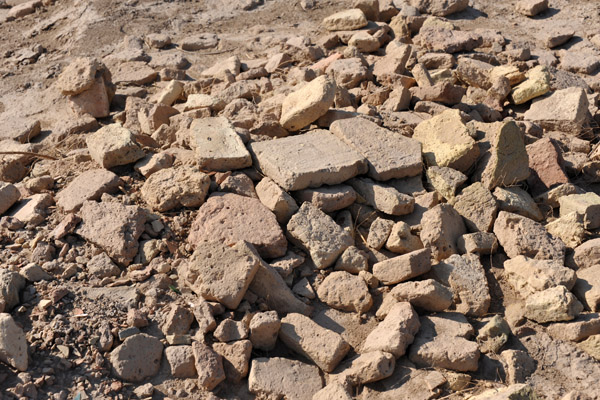
Remains of ancient bricks at an excavation site inside the Giaur Kala |
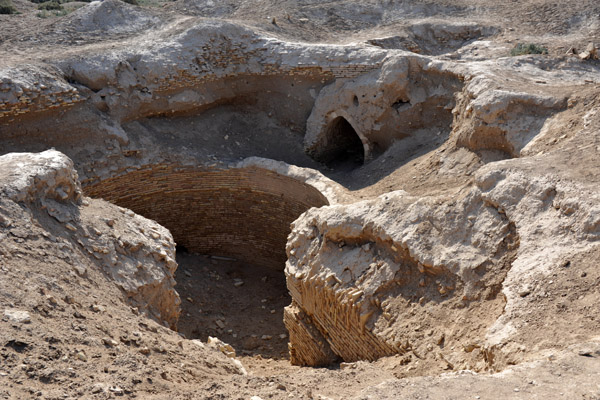
Excavations of a 7th C. mosque in the Giaur Kala |
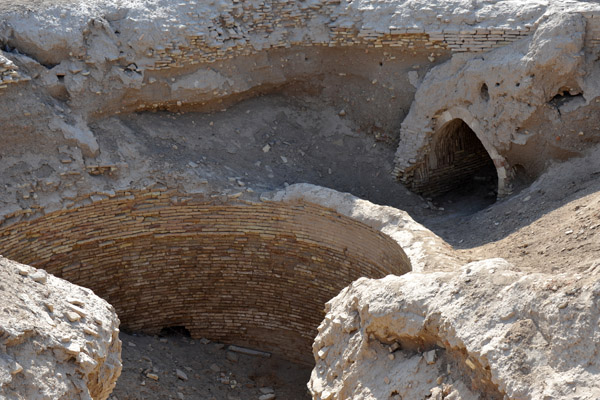
Water cistern near the Giaur Kala's 7th C. mosque |
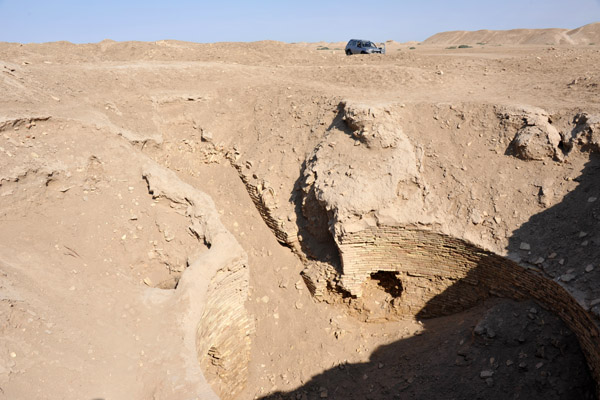
Water cistern near the Giaur Kala's 7th C. mosque |
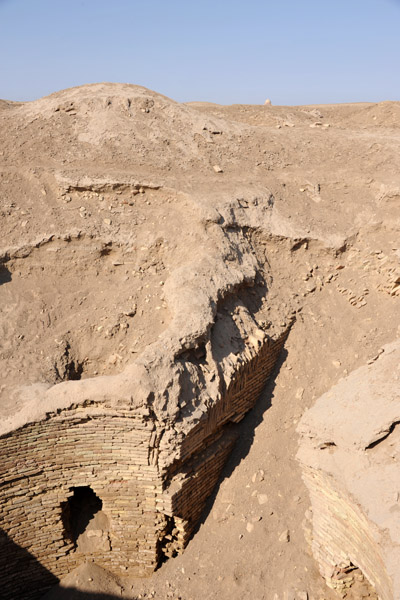
Excavated cistern, Giaur Kala, Merv |
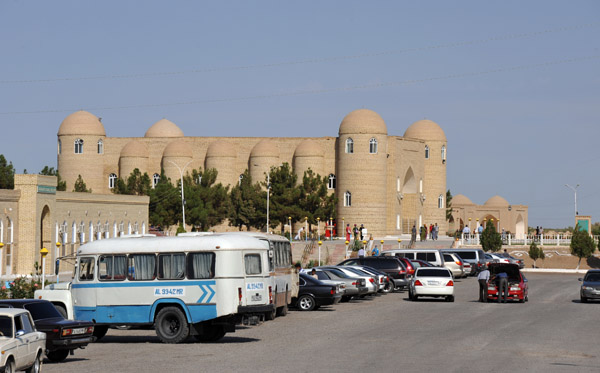
The modern Mosque of Yusuf Hamadani, an important pilgrimage site with the tomb of a 12th C. holy man |
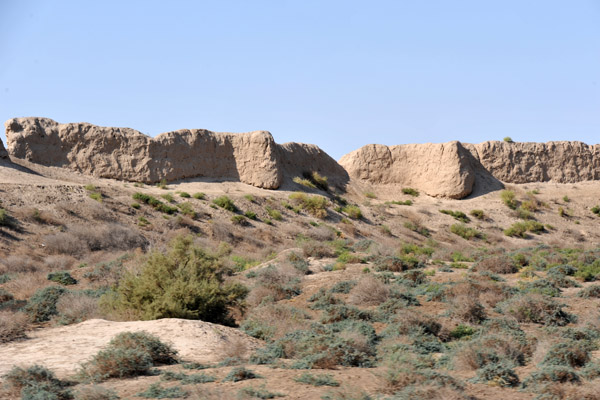
Northern wall of the Sultan Qala, the largest of Merv's ancient walled cities |
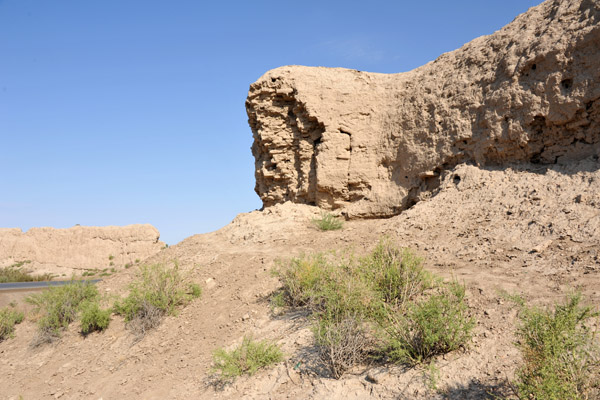
The Sultan Qala was founded by Abu Muslim al-Khorasani in the 8th Century |
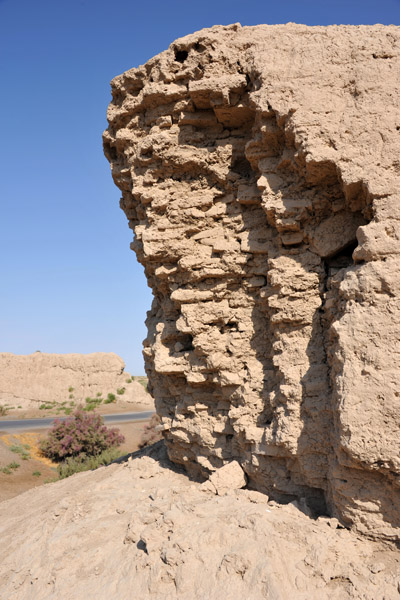
...had to talk the guide into stopping...he was in a rush |
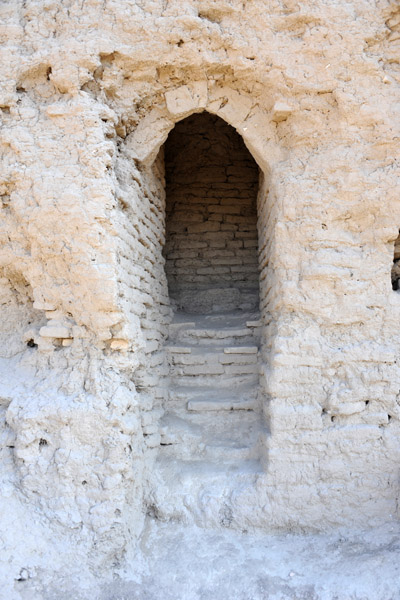
Worn staircase |
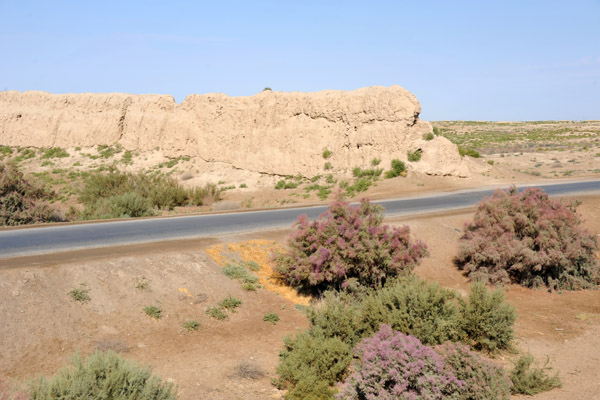
The main road passing through the Sultan Qala |
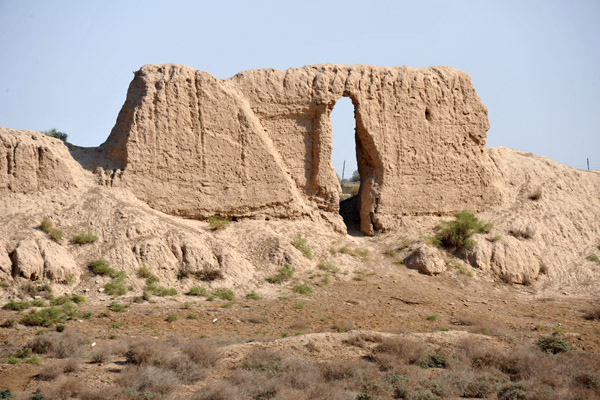
Shahryar Ark (Sovereign's Citadel) in the northeast corner of the Sultan Qala |
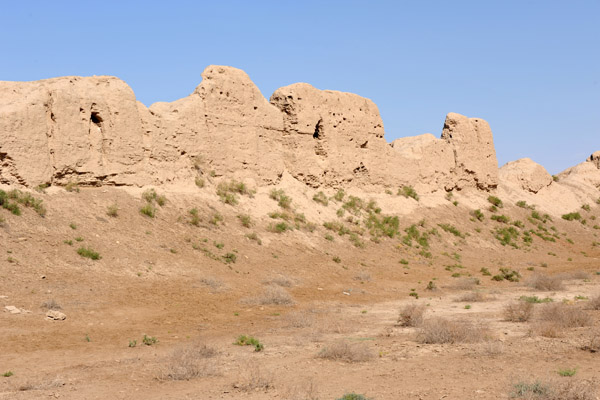
The Seljuk palace (11th C.) is in the northeast corner of the Sultan Qala |
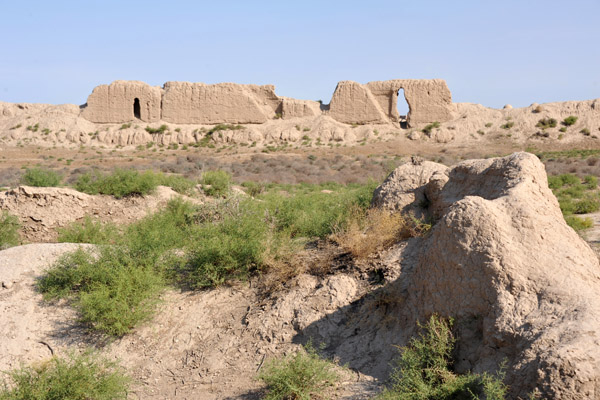
Shahryar Ark, Ancient Merv |
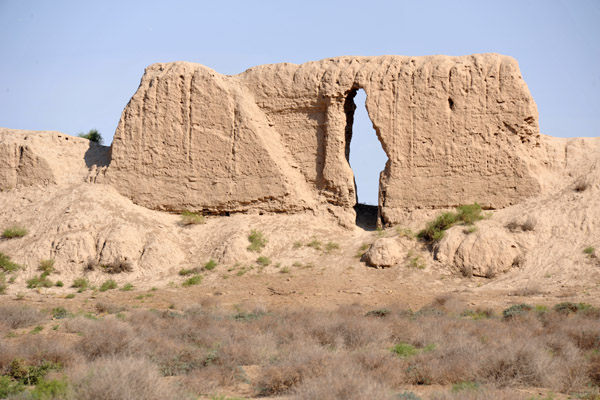
Shahryar Ark - Soltangala |
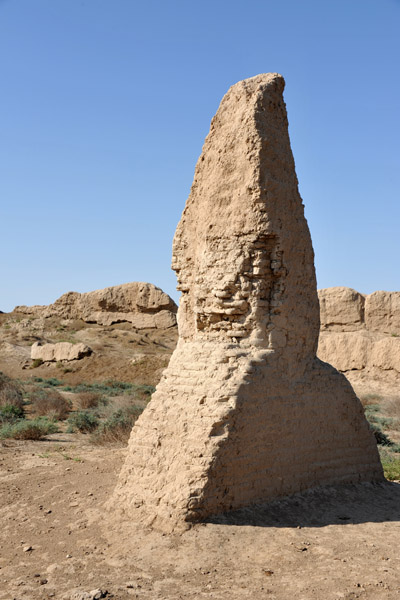
Pinnacle-like ruin in the center of the Shahryar Ark |
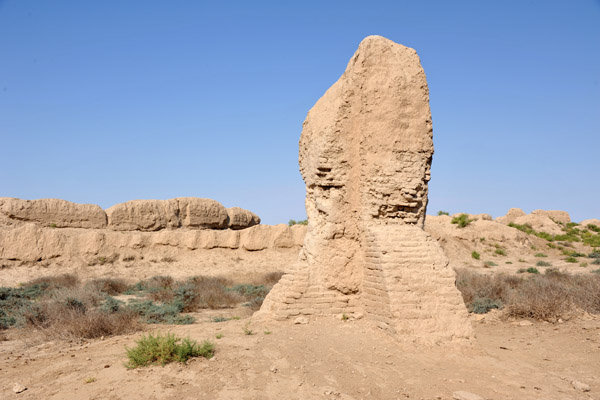
Merv was at its largest under the Seljuks with perhaps 200,000 inhabitants, the largest city in the world in 1150 AD |
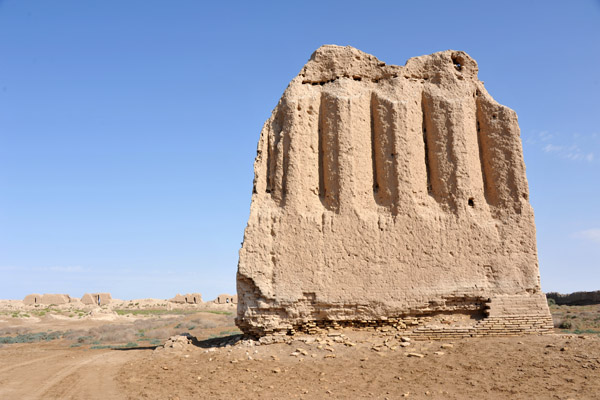
Kepderihana or Kaftar Khana ("pigeon house") - one of the more substantial ruins in the Shahryar Ark |
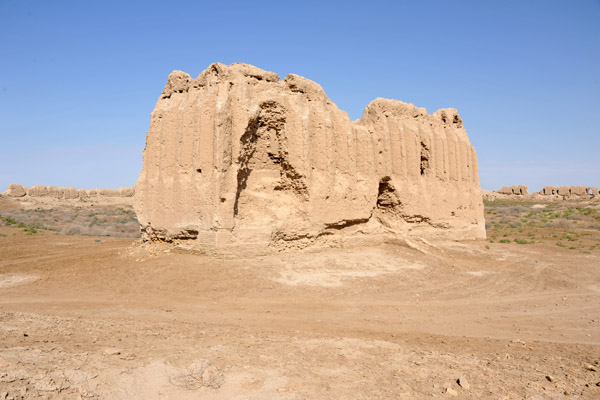
The Kepderihana may have actually used for pigeons |

Others believe the Kepderihana was a library or treasury due to its location next to the palace |
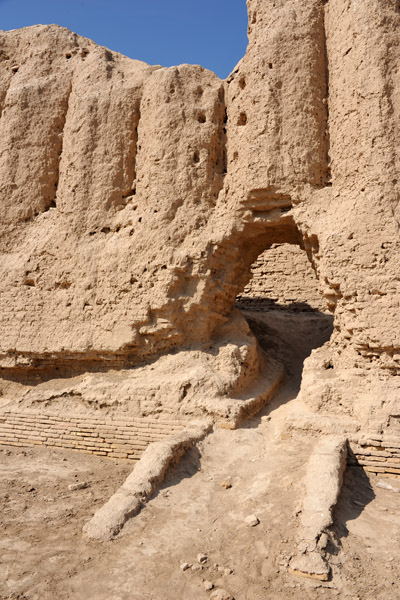
Eastern entrance to the Kepderihana |
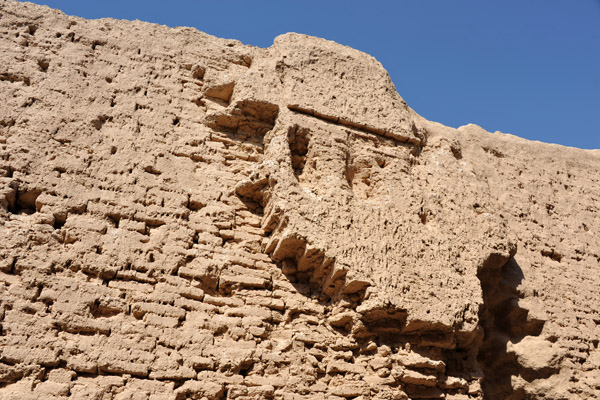
Interior of the Kepderihana in the Shahryar Ark, Merv |
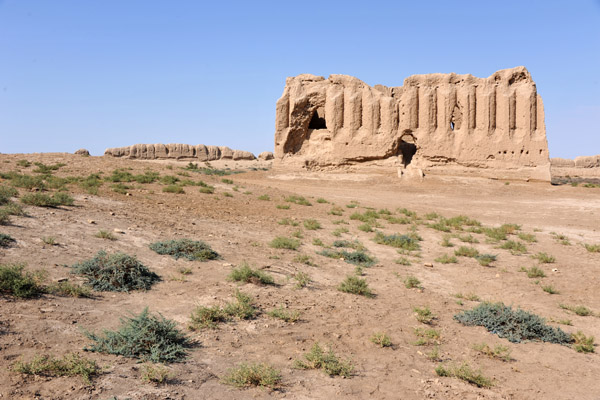
The Kepderihana also preserves Merv's unique corrugated wall architecture |
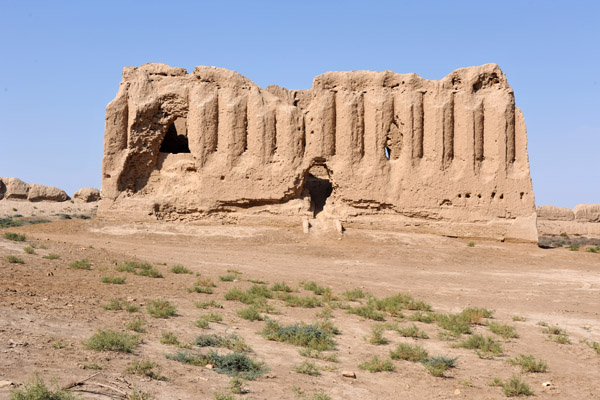
Kepderihana in the Shahryar Ark, Merv |
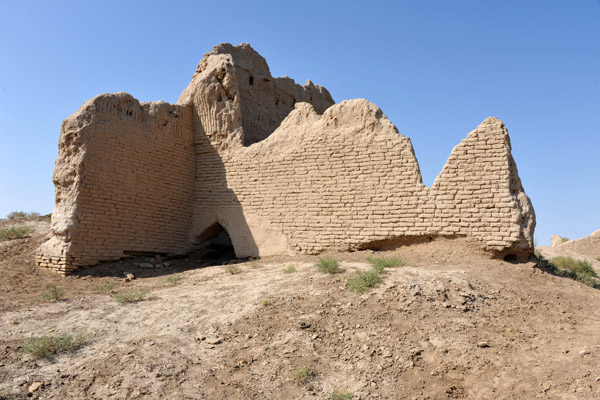
Remains of another mudbrick structure inside the Shahryar Ark, Merv |
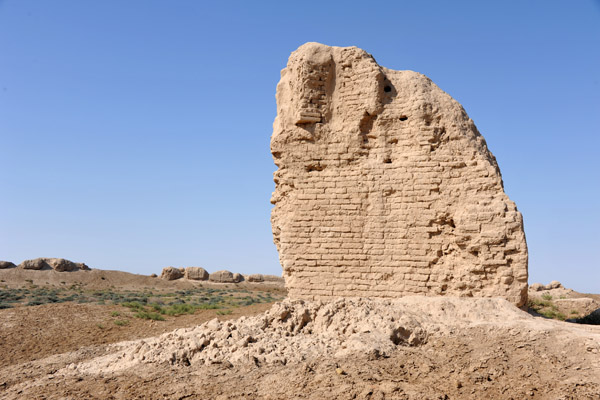
Little remains of the Seljuk palace in the Shahryar Ark of Sultan Qala, Merv |
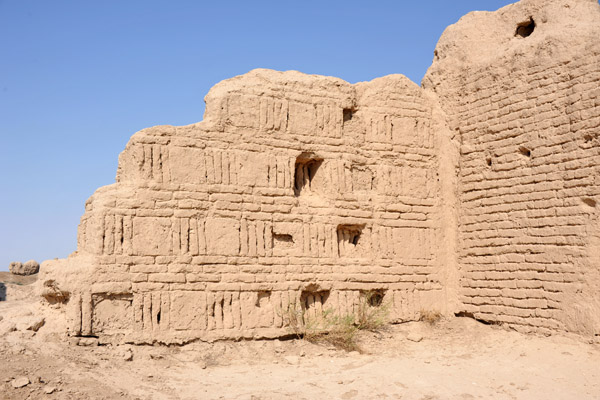
A building in the Shahryar Ark with ornate vertical brickwork |

Shahryar Ark, Merv |
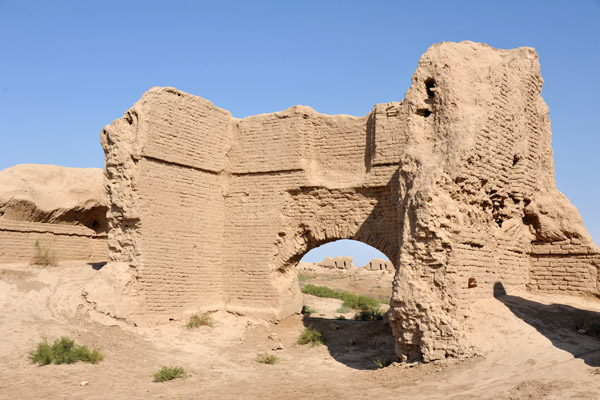
Remains of a gate to the Sultan's Palace, Shahryar Ark |
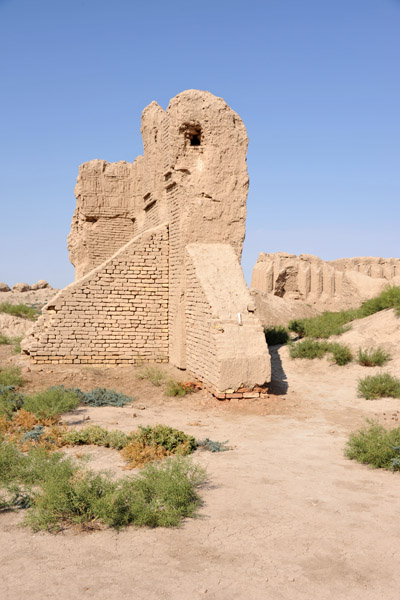
Shahryar Ark, Merv |
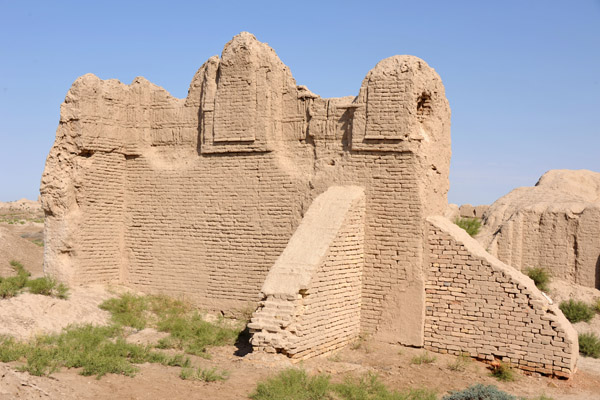
Shahryar Ark, Merv |

Panoramic view of the ruins of the Shahryar Ark in the northeast corner of the Sultan Qala |
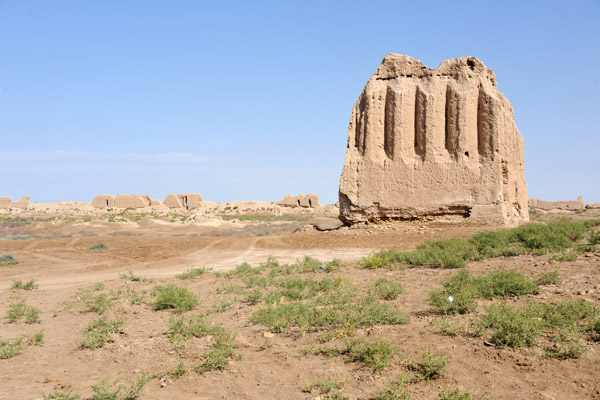
Southern wall of the Kepderihana, Merv |
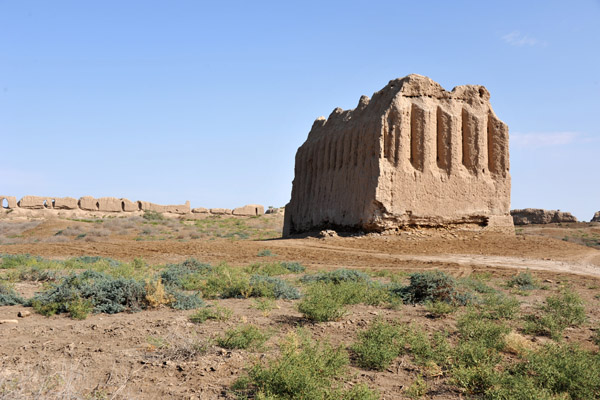
Kepderihana - Shahryar Ark, Merv |
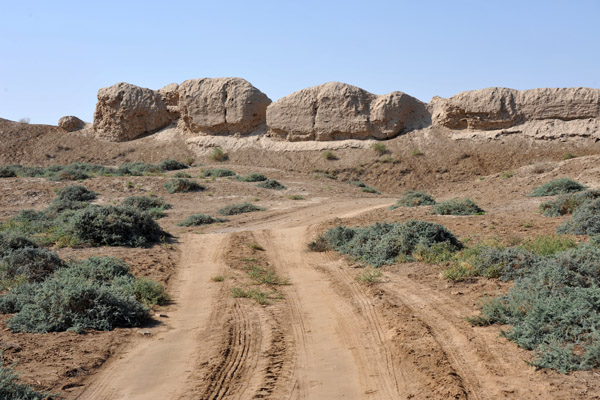
Dirt road within the Shahryar Ark |
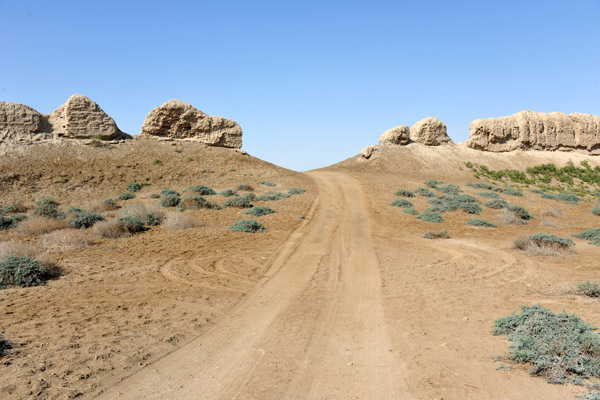
The road to the main portion of the Sultan Qala |
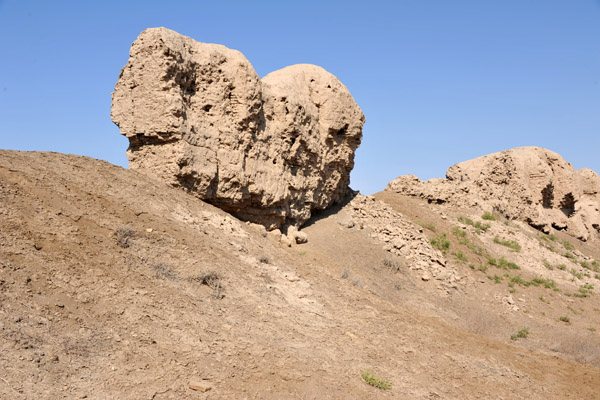
Remains of a tower of the Shahryar Ark |
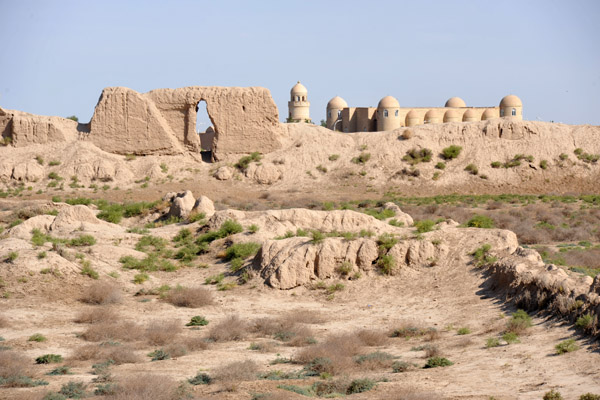
Shahryar Ark with the Mosque of Yusuf Hamadani |
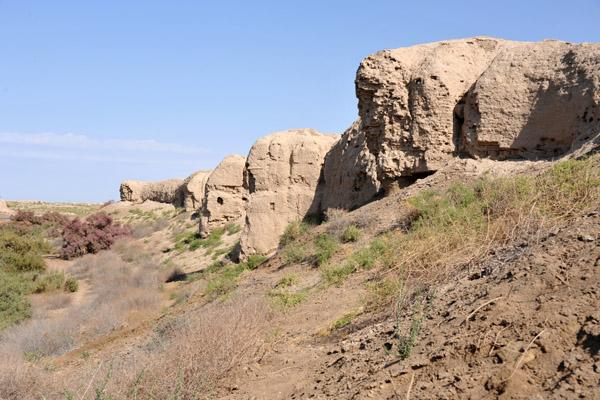
Walls of the Shahryar Ark, Merv |
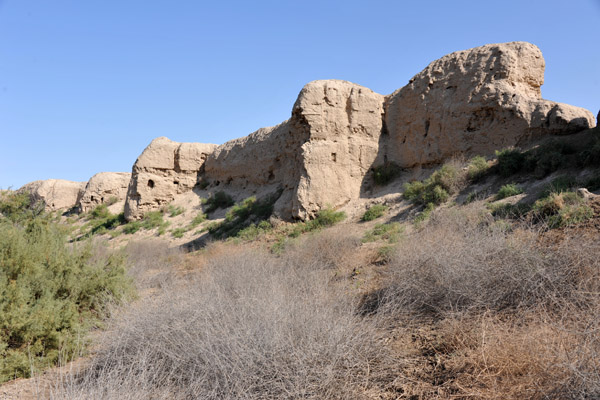
Walls of the Shahryar Ark, Merv |
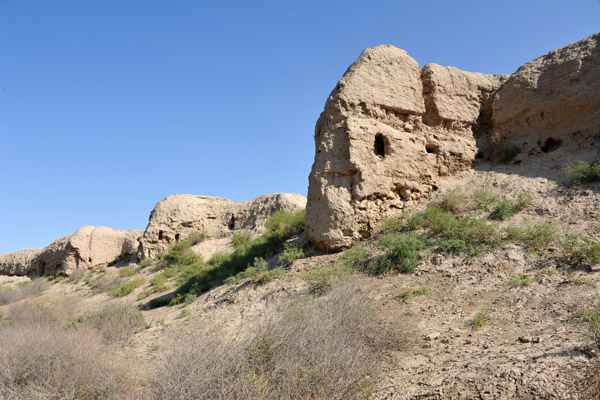
Walls of the Shahryar Ark, Merv |
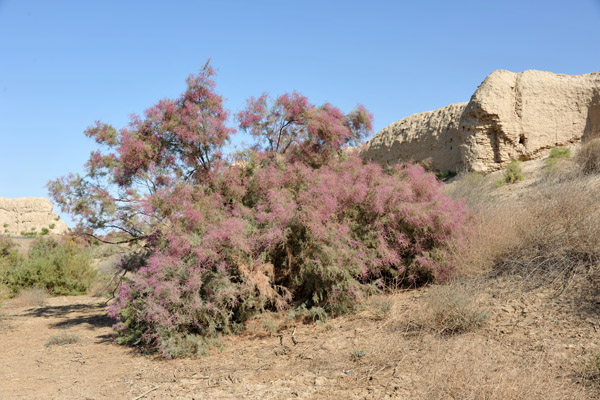
...don't remember what the guide called this bush... |
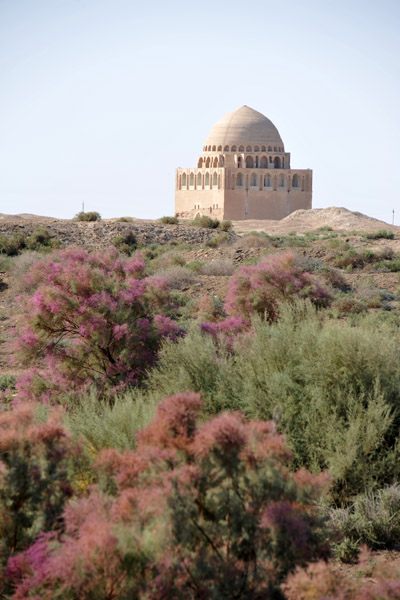
At the center of the Sultan Qala the Mausoleum of Sultan Sanjar |
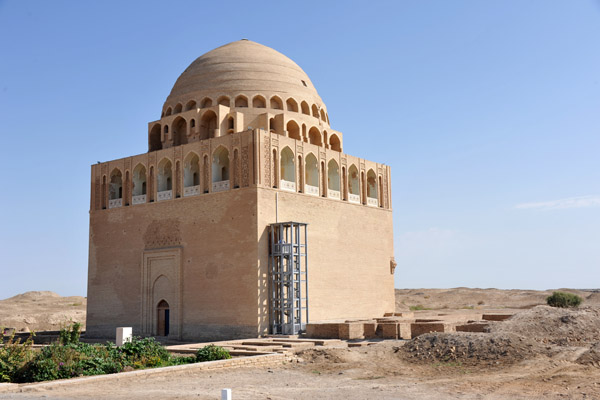
12th Century Mausoleum of Sultan Sanjar was spared by the Mongols in the tradition of leaving the tallest monument standing |
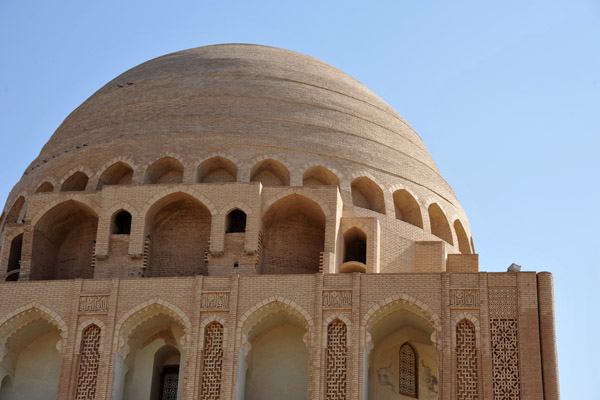
The Seljuk Sultan Sanjar ruled Merv at its peak from 1118-1153 |
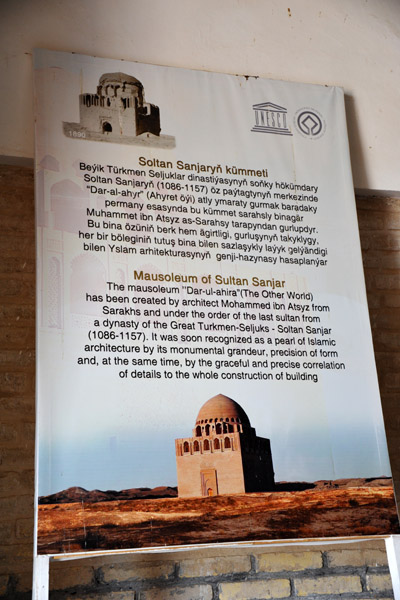
Mausoleum of Sultan Sanjar (1086-1157) |
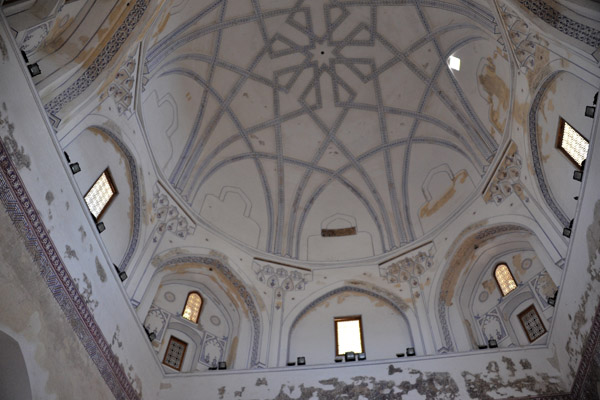
The interior dome of the Mausoleum of Sultan Sanjar |

Some of the original artwork of the Mausoleum of Sultan Sanjar |
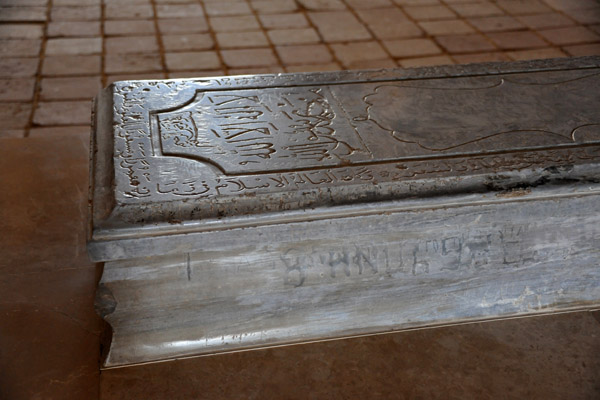
The tomb Sultan Sanjar who died in 1157 after losing his empire in 1153 to the Turkomen (Oghuz Turks) |
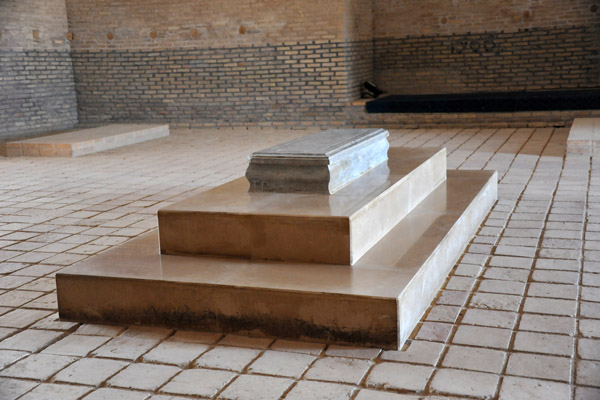
Mausoleum of Sultan Sanjar |
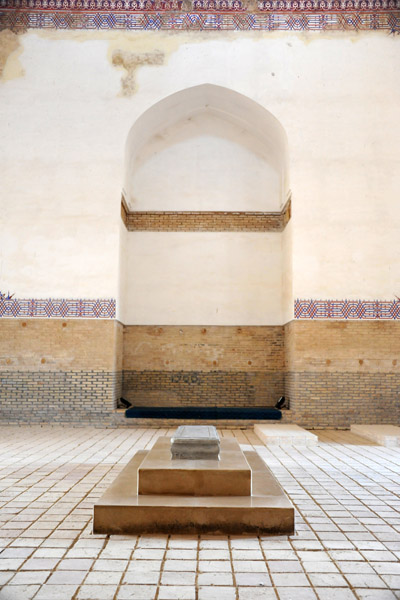
Mausoleum of Sultan Sanjar |
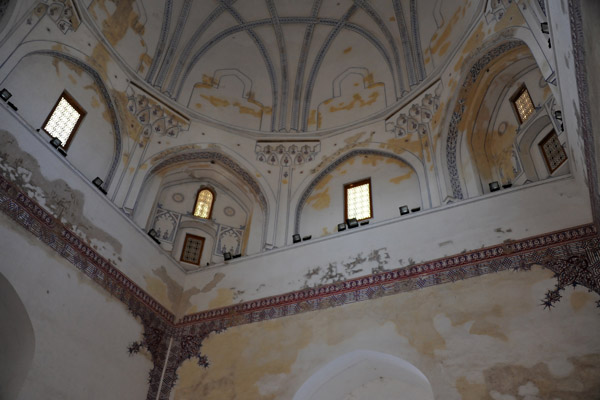
Mausoleum of Sultan Sanjar, Merv |
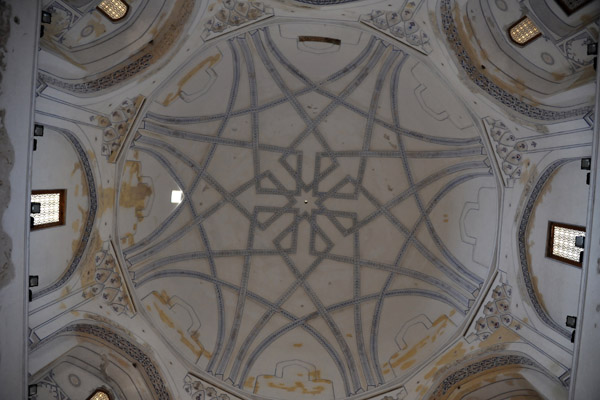
The dome gives the mausoleum amazing acoustics |
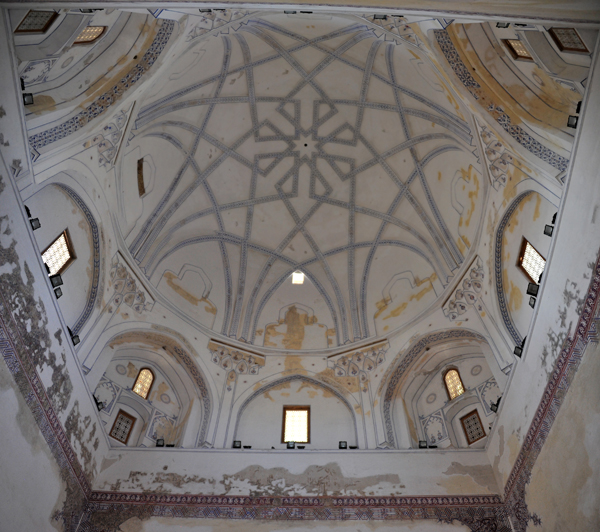
The dome of the Mausoleum of Sultan Sanjar |
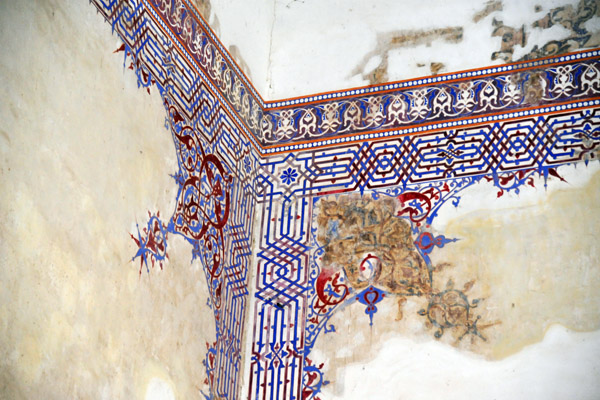
Original decoration - Mausoleum of Sultan Sanjar |
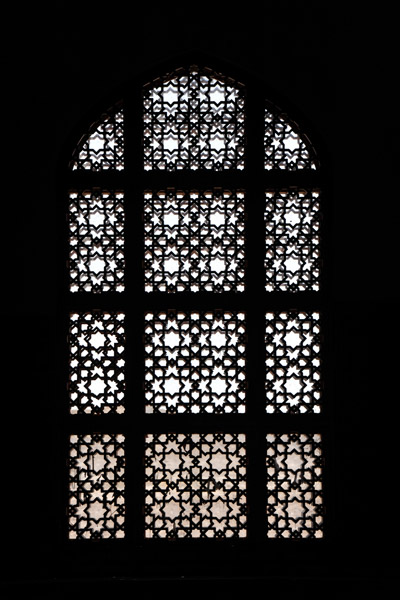
Latticed window, Mausoleum of Sultan Sanjar |
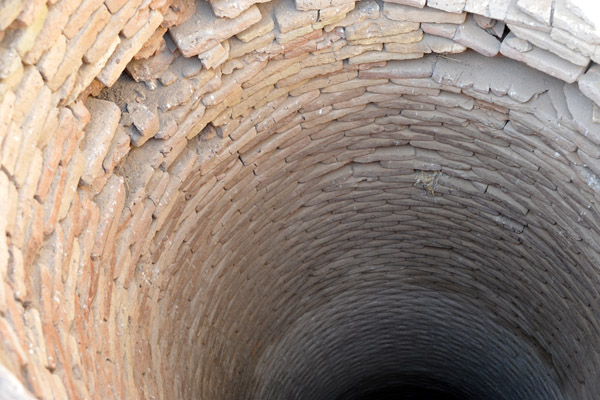
Well outside the Mausoleum of Sultan Sanjar |
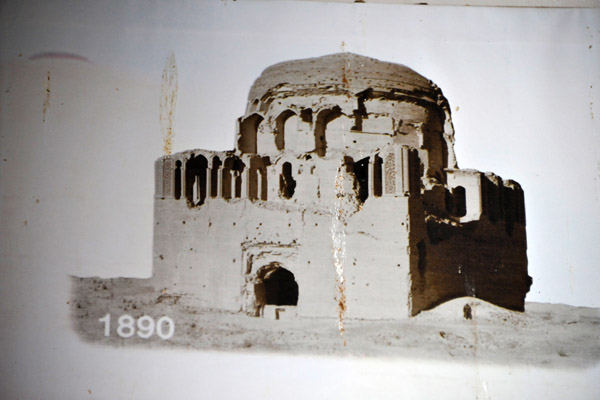
In 1890 the mausoleum was a picturesque ruin |
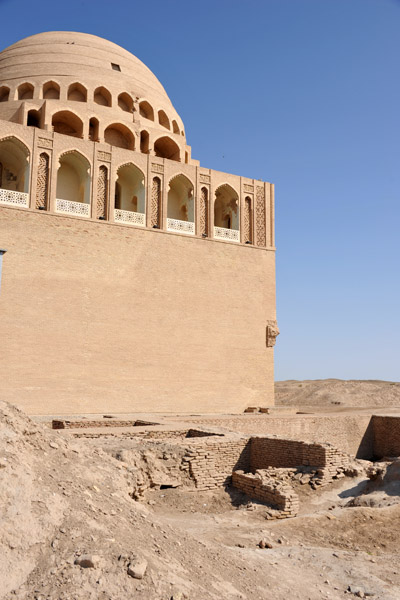
In my opinion, the restoration was excessive... |
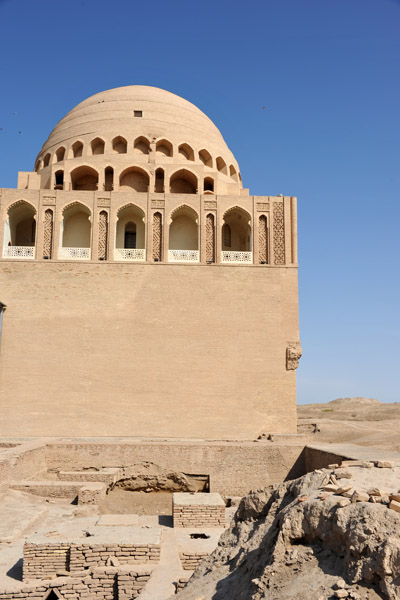
Heavily restored Mausoleum of Sultan Sanjar |
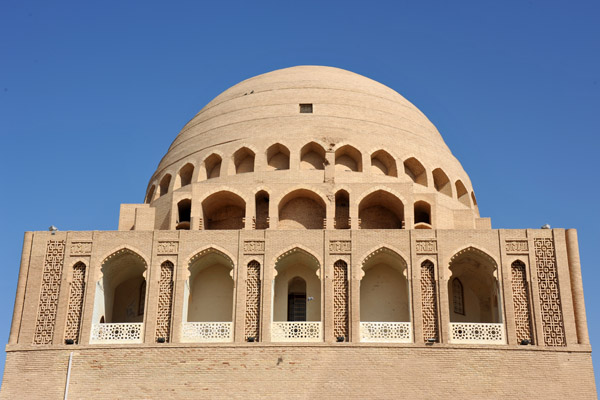
The restoration, however, did not replace the tile work that would have covered the dome |
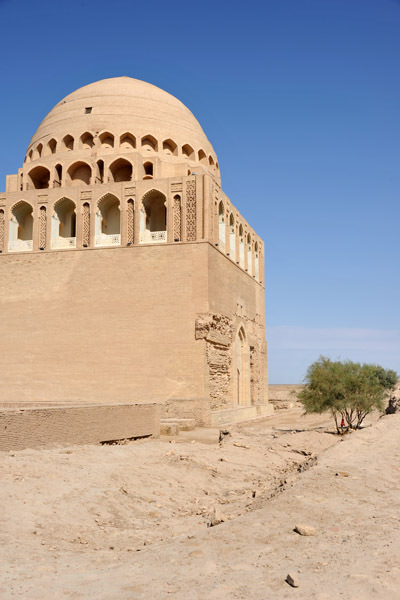
Mausoleum of Sultan Sanjar |
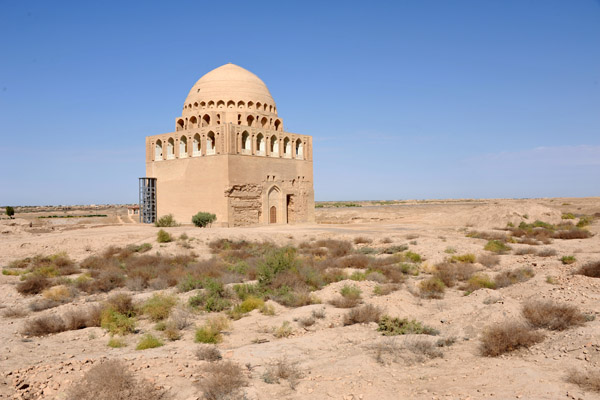
The Mausoleum of Sultan Sanjar stands alone in the center of the Sultan Qala, the largest of Merv's ancient cities |
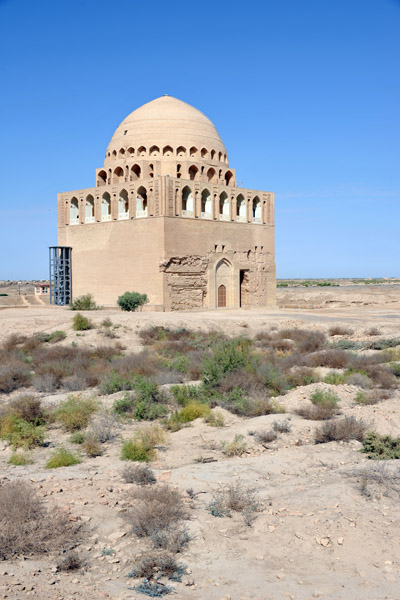
A mosque used to stand next to the tomb |
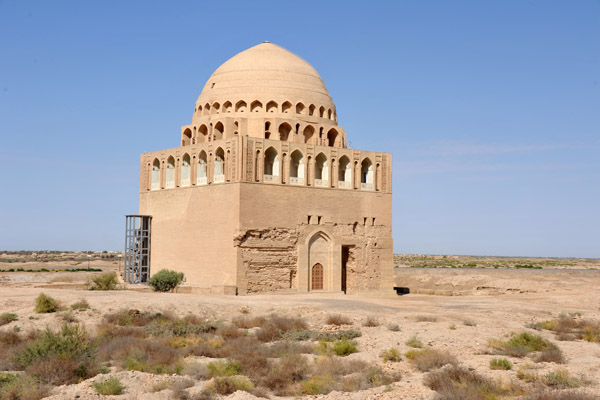
The large square building is 27m per side and the dome is 18m in diameter |
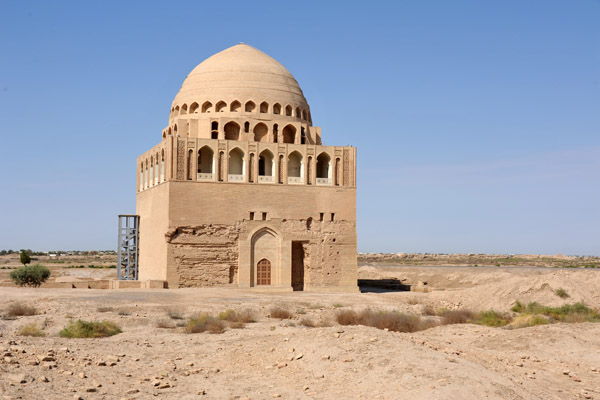
The dome was restored in 1911 and the rest of the mausoleum in the 1990's with the aid of Turkey |

Mausoleum of Sultan Sanjar, Merv |
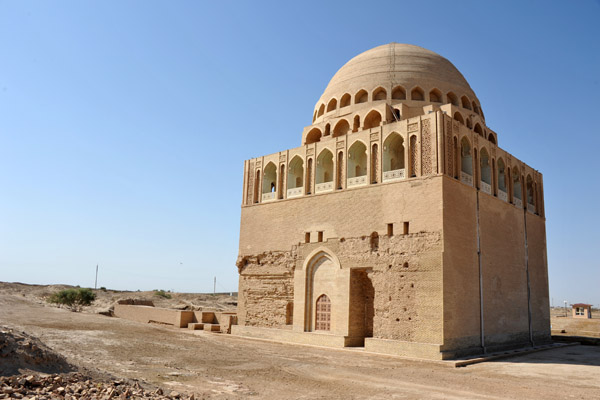
The Mongol conquest of Merv was one of the bloodiest single actions in human history - only 400 artisans were spared |
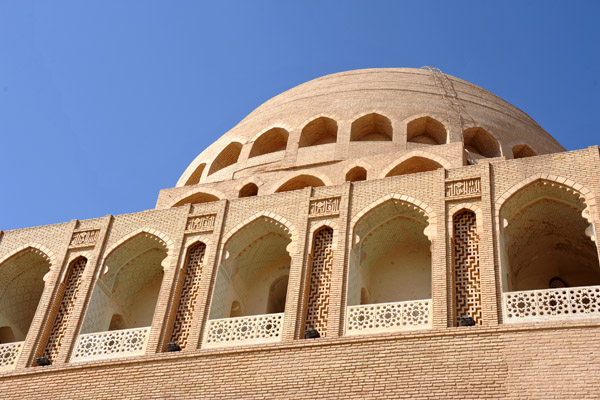
Mausoleum of Sultan Sanjar |
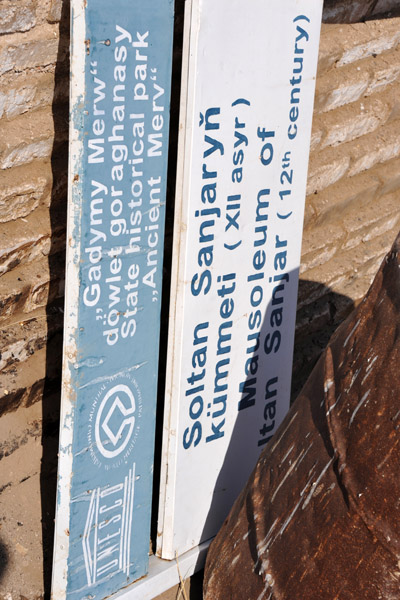
Soltan Sanjar yň kümmeti (XII asyr) |
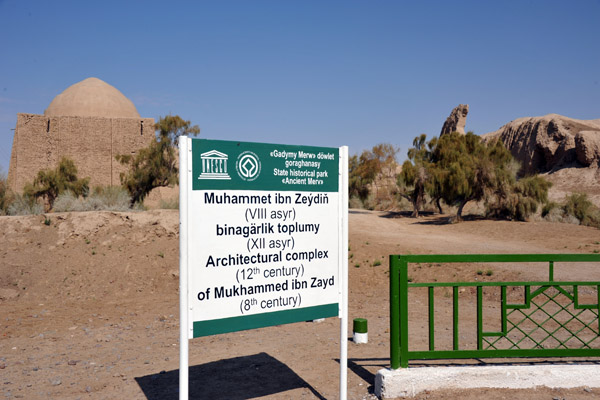
The last stop - the 12th C. Mausoleum of Muhammed ibn Zayed |
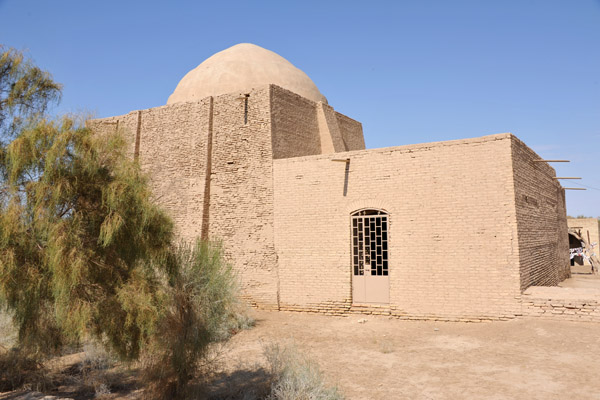
The Mausoleum of Mohammed ibn Zayed, also heavily restored |

Ruins next to the Mausoleum of Mohammed ibn Zayed |
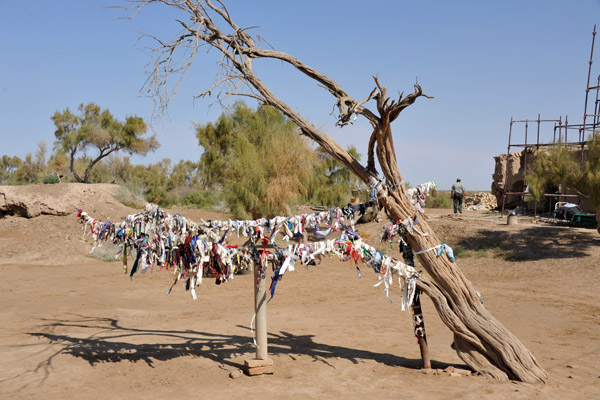
Sacred saxaul tree with cloth prayer strips |
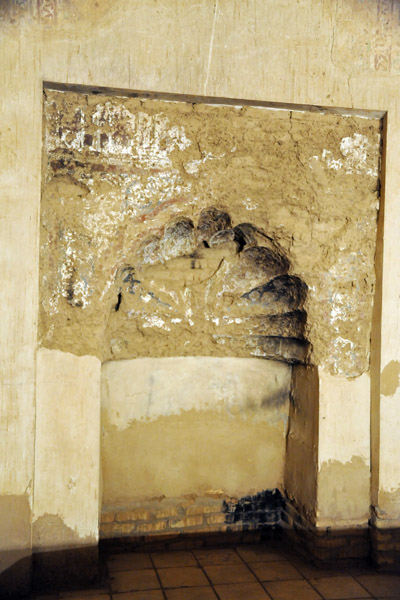
Mihrab of the Mausoleum of Mohammed ibn Zayed |
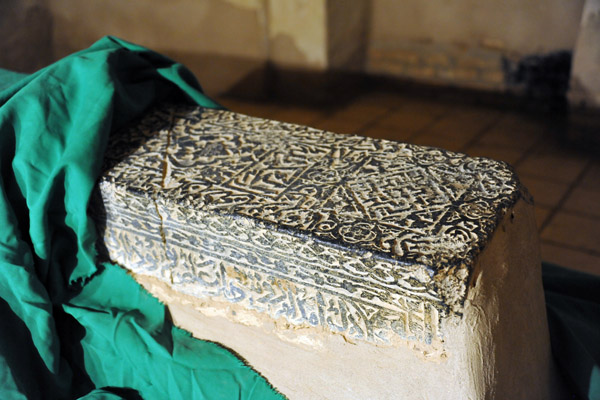
Tombstone - Mausoleum of Mohammed ibn Zayed |
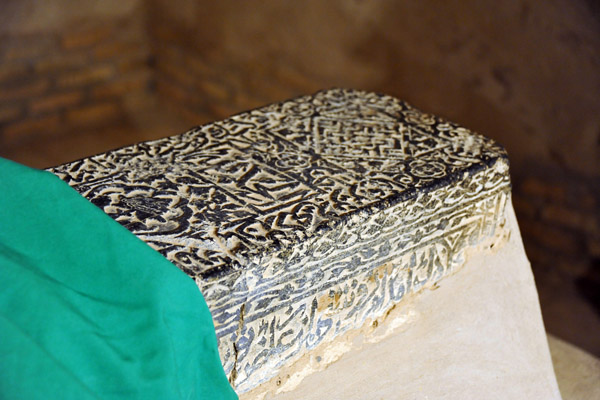
Tombstone - Mausoleum of Mohammed ibn Zayed |

Calligraphy and ornate brickwork, Mausoleum of Mohammed ibn Zayed |
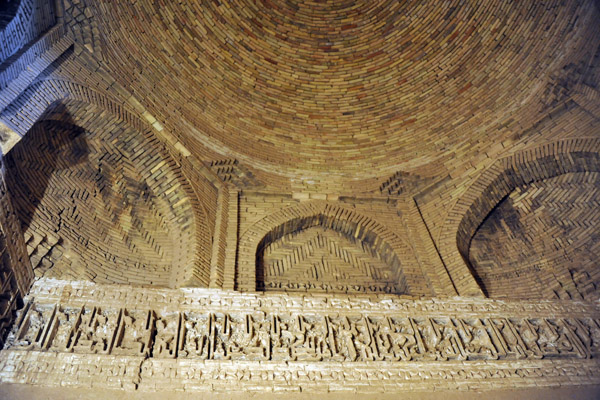
Dome of Mausoleum of Mohammed ibn Zayed, Merv |
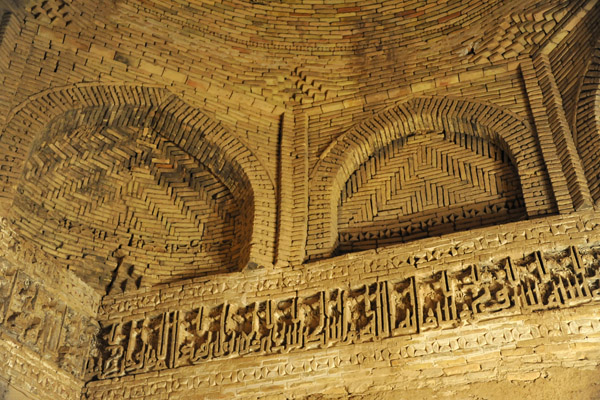
Mausoleum of Mohammed ibn Zayed |
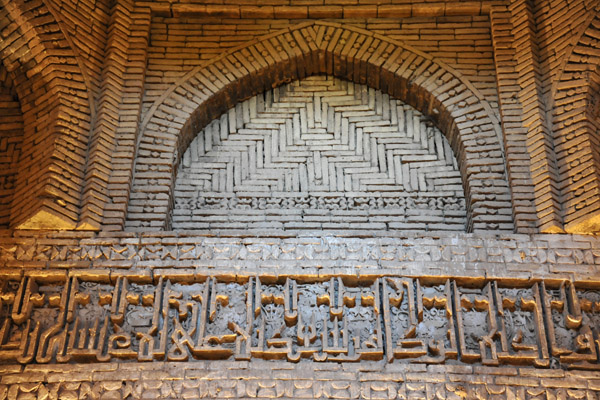
Mausoleum of Mohammed ibn Zayed |
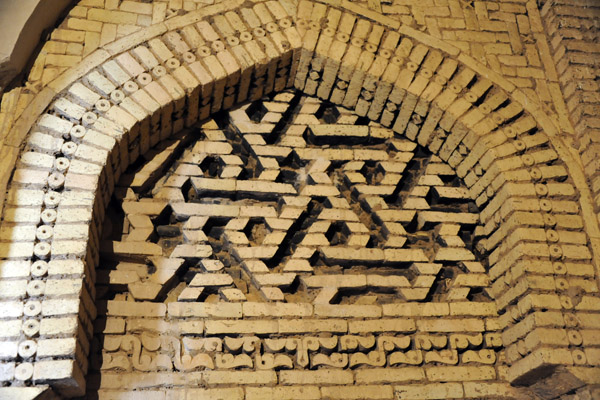
Mausoleum of Mohammed ibn Zayed |

Decorate brickwork, Mausoleum of Mohammed ibn Zayed |
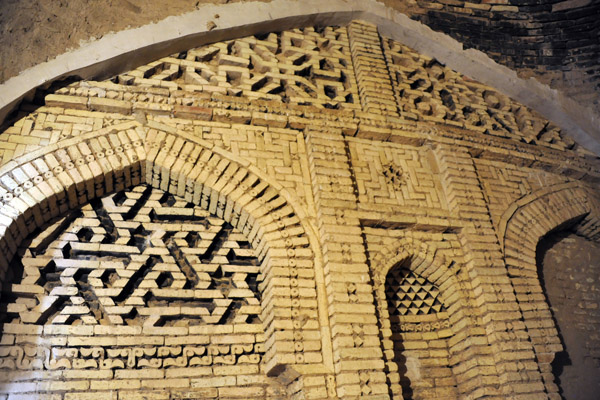
Mausoleum of Mohammed ibn Zayed |
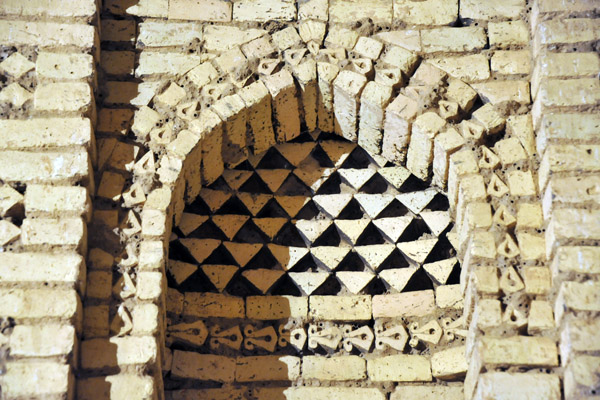
Mausoleum of Mohammed ibn Zayed |
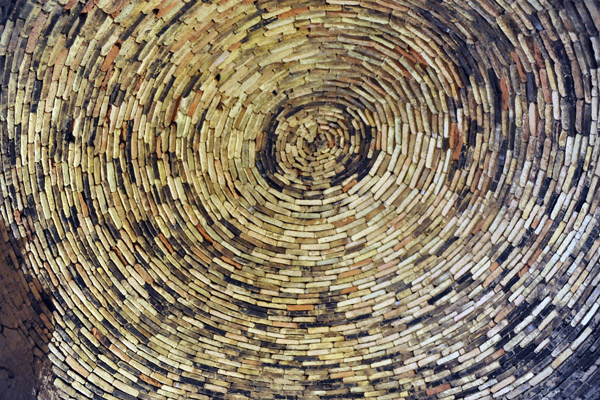
Brick dome, Mausoleum of Mohammed ibn Zayed, Merv |
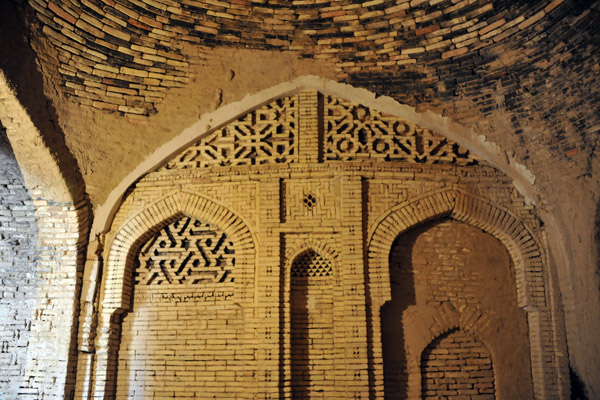
Mausoleum of Mohammed ibn Zayed |
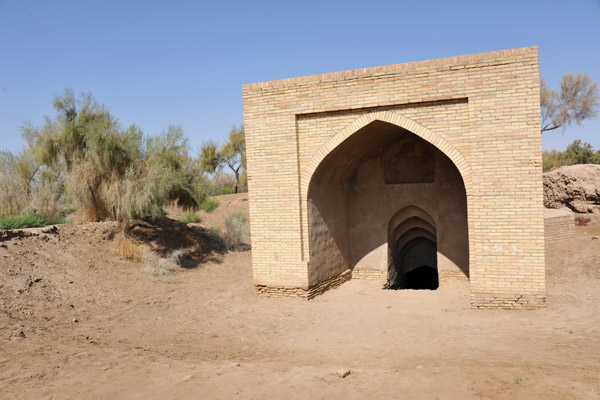
Cistern or icehouse next to the Mausoleum of Mohammed ibn Zayed |
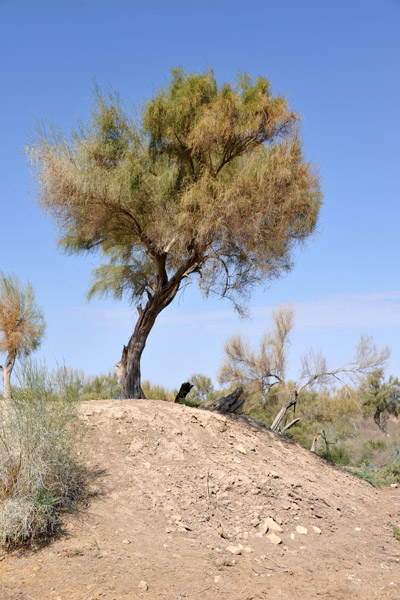
UZTM11 3341.jpg |
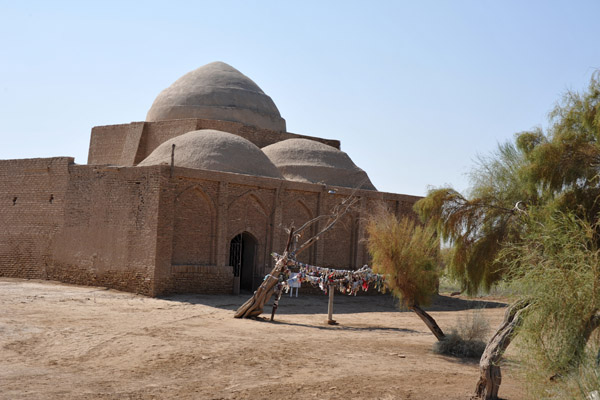
The Mausoleum of Mohammed ibn Zayed is an important Sufi pilgrimage site |
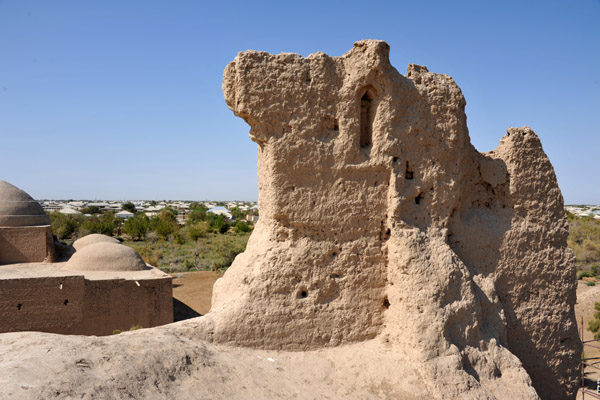
Ruins to the west of the Sultan Kala, Merv |
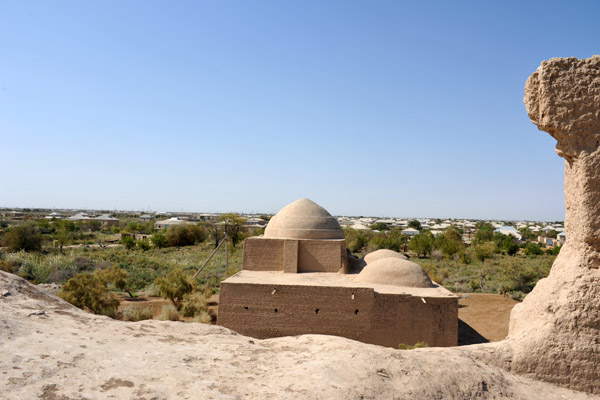
Mausoleum of Mohammed ibn Zayed |
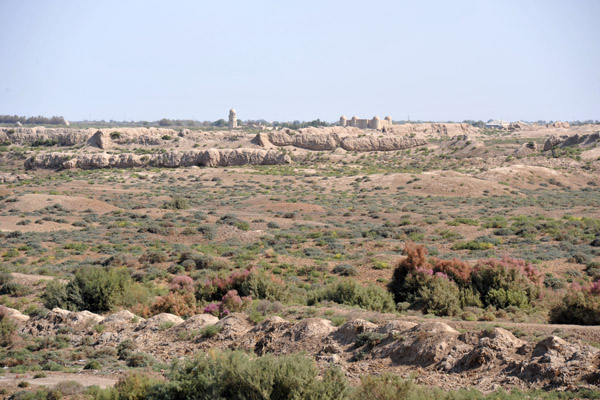
Walls of the Sultan Qala from Mausoleum of Mohammed ibn Zayed |
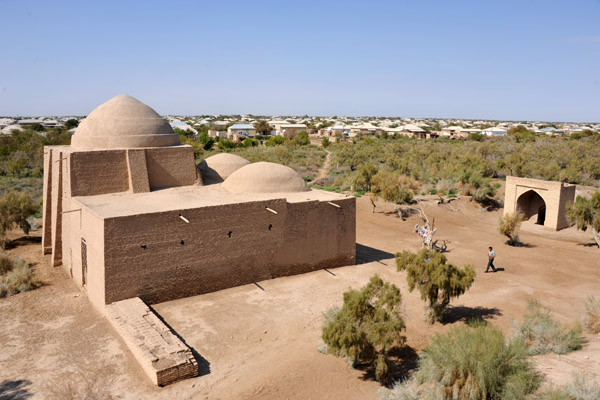
Mausoleum of Mohammed ibn Zayed |
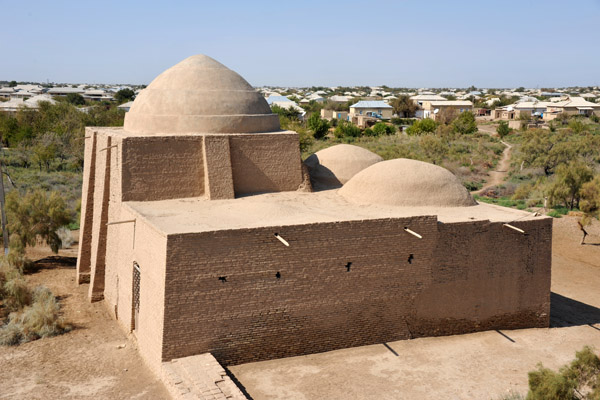
Mausoleum of Mohammed ibn Zayed |
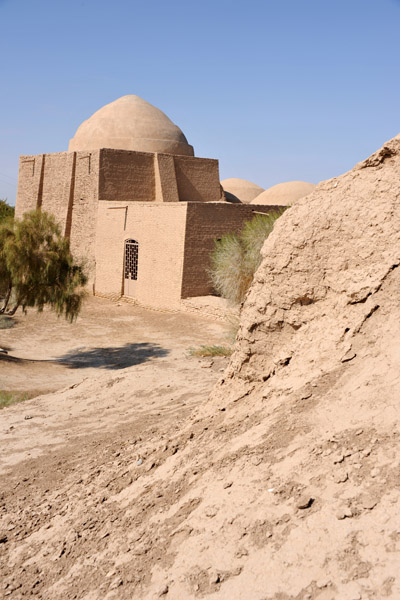
Mausoleum of Mohammed ibn Zayed |
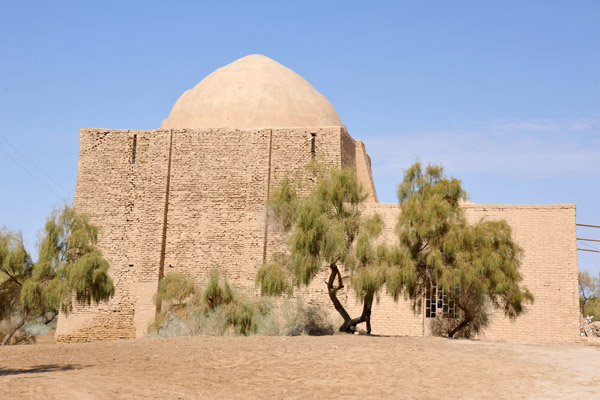
Mausoleum of Mohammed ibn Zayed |
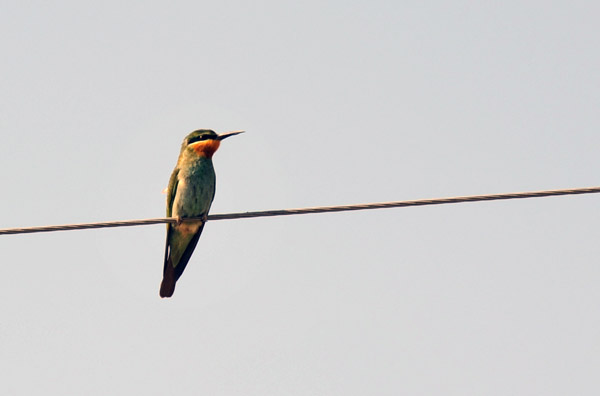
European Bee-eater (Merops apiaster), Merv, Turkmenistan |
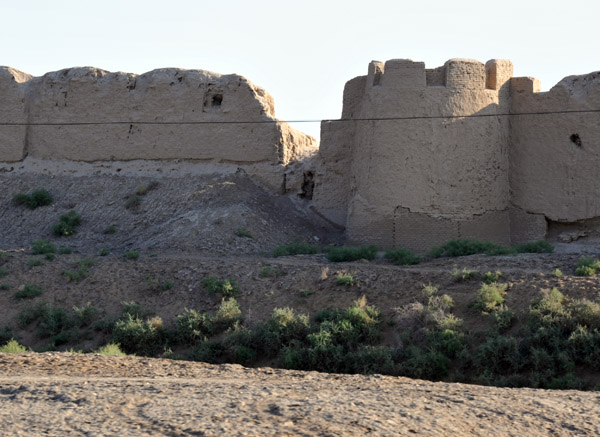
Walls of Merv's 5th walled cits - Bairam Ali Khan Kala, built in the 18th C. near the modern town |
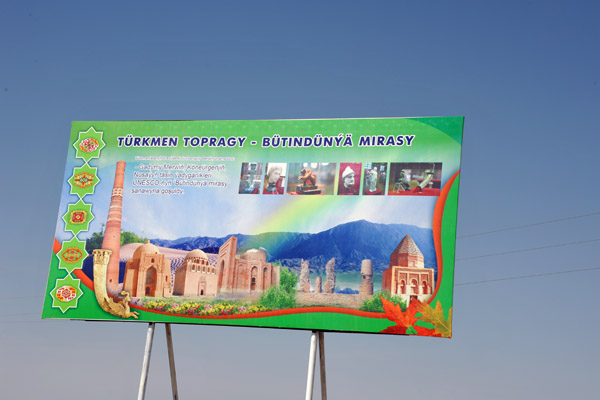
Billboard with the World Heritage of Turkmenistan |
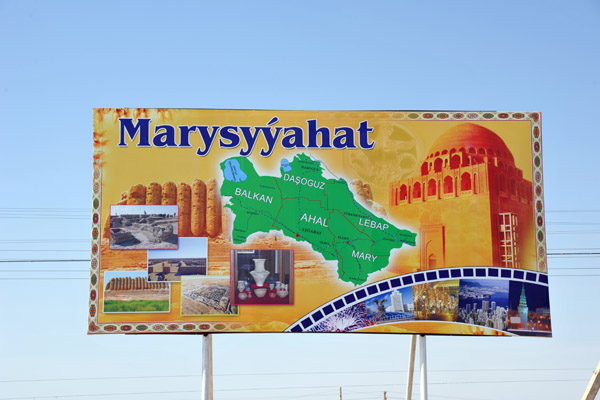
Marysyıahat |
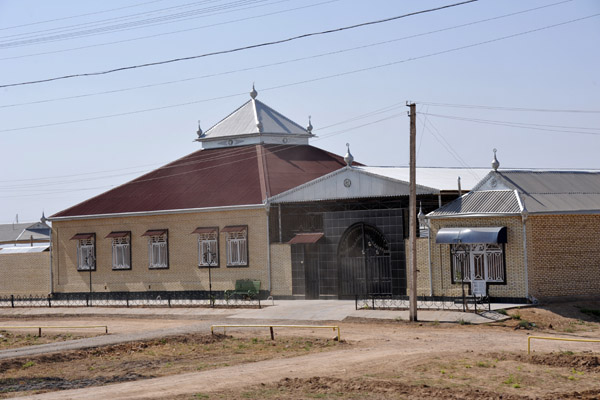
Modern house near the ruins of Ancient Merv |
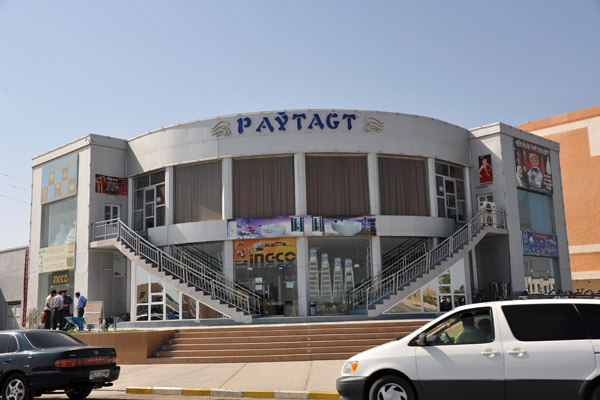
Downtown Merv |
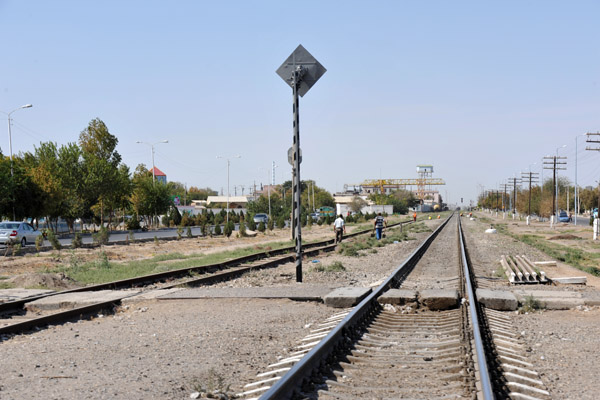
The Turkmenistan Railway passing through Merv |











